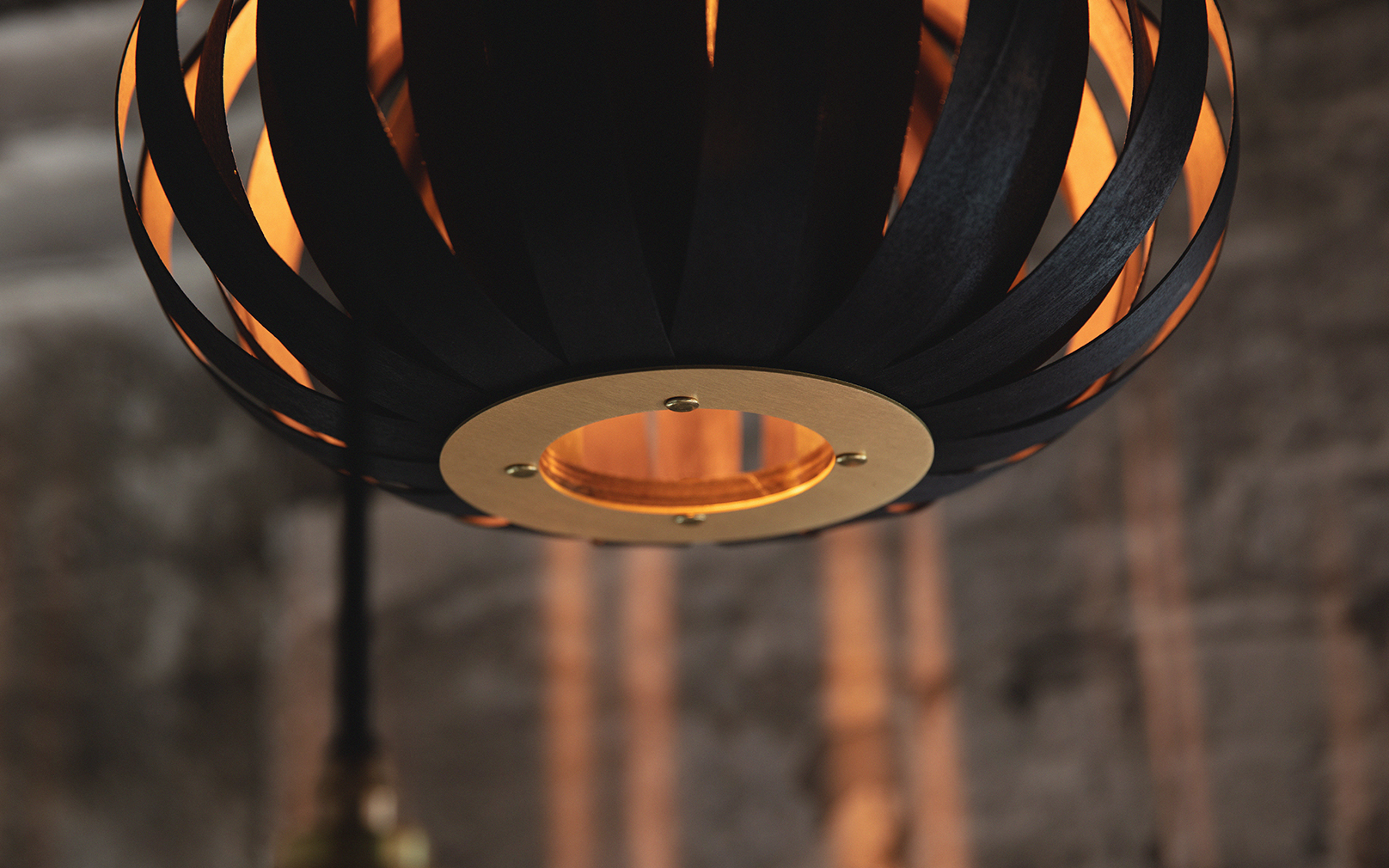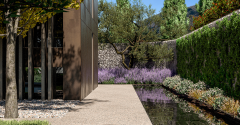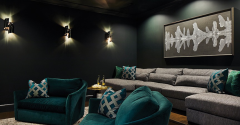While dark-colored walls can add a depth to a room, it can sometimes be tricky to style around them. Every dark-colored wall brings a heavy tone with it, and it’s important to know how to design the space so has a balanced tone. While it’s a designer’s challenge, here are different rooms that prove it can be done:
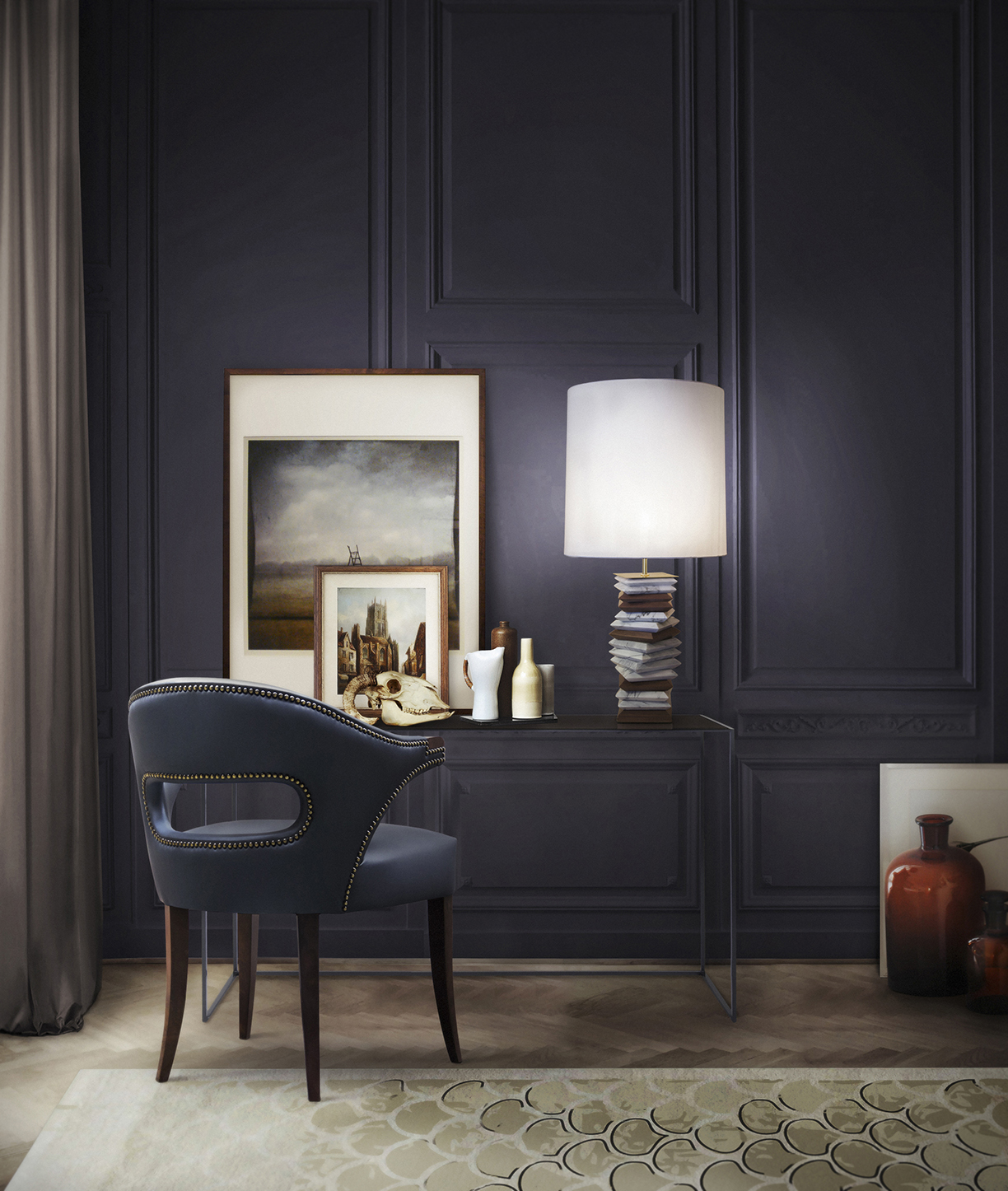
Photo courtesy of Brabbu Design Forces
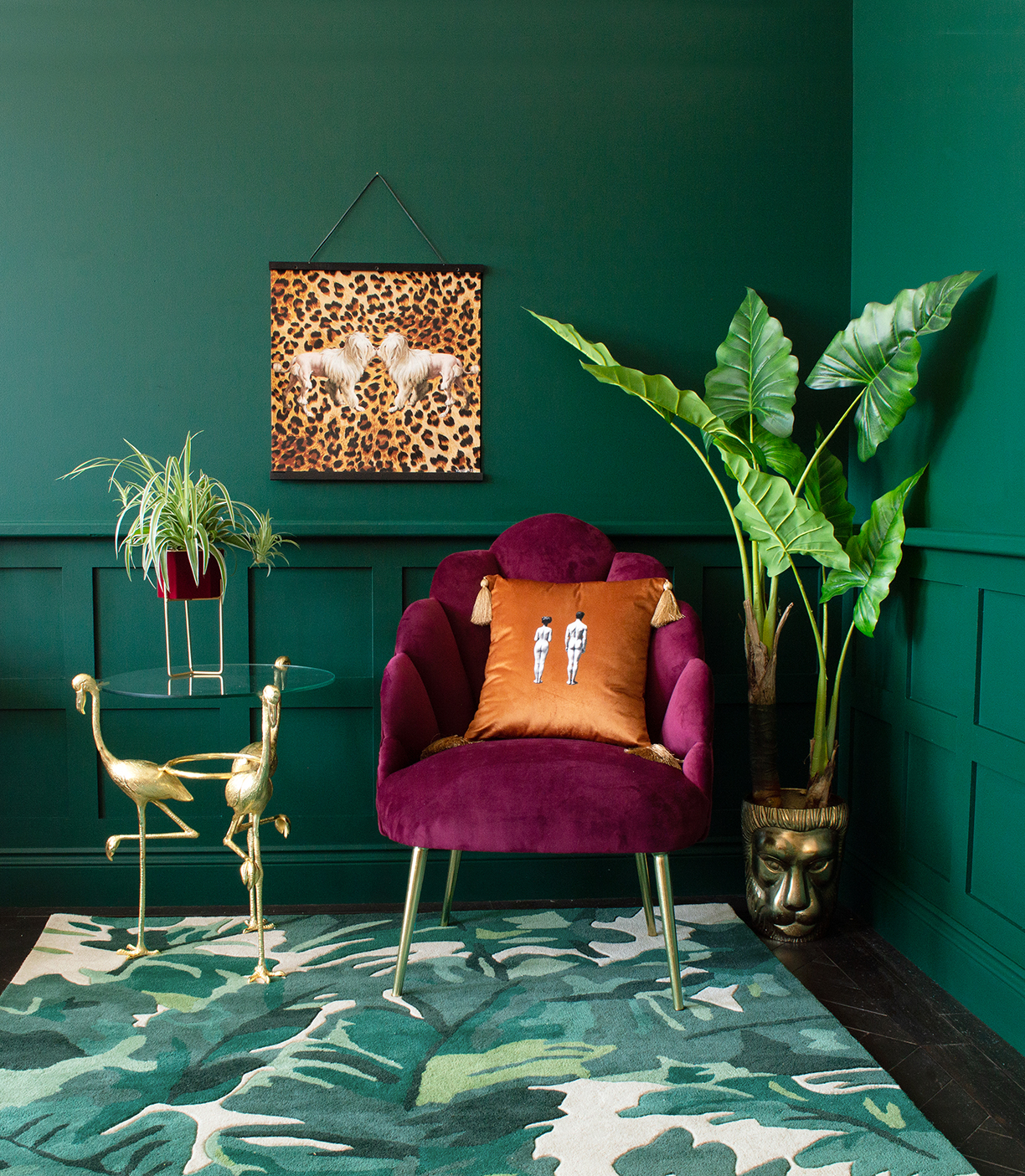
Photo courtesy of AUDENZA
1. Brighter Colors, Warmer Tones
When designing any room, it’s crucial to look at the colors you’ll be using and make sure they balance each other out. This is especially so for rooms with dark-colored walls. While they add a great tone to the space, too many darker tones can make a room feel cold and uninviting.
The perfect balance of colors involves a mixture of both darker and lighter colors, such as this bright red chair in front of a dark green backdrop. The chair adds a pop of color, making the dark colored walls feel warm and inviting.
1. Light versus Dark
Balancing the lighter and darker tones can be a challenge, since having too much of one can overwhelm and wash out the other. These baths represent the perfect balance of tones. The darker walls counteract against the polished bathtubs and light fixtures. This not only adds a great balance, but brings a rich and inviting depth of color to the room.
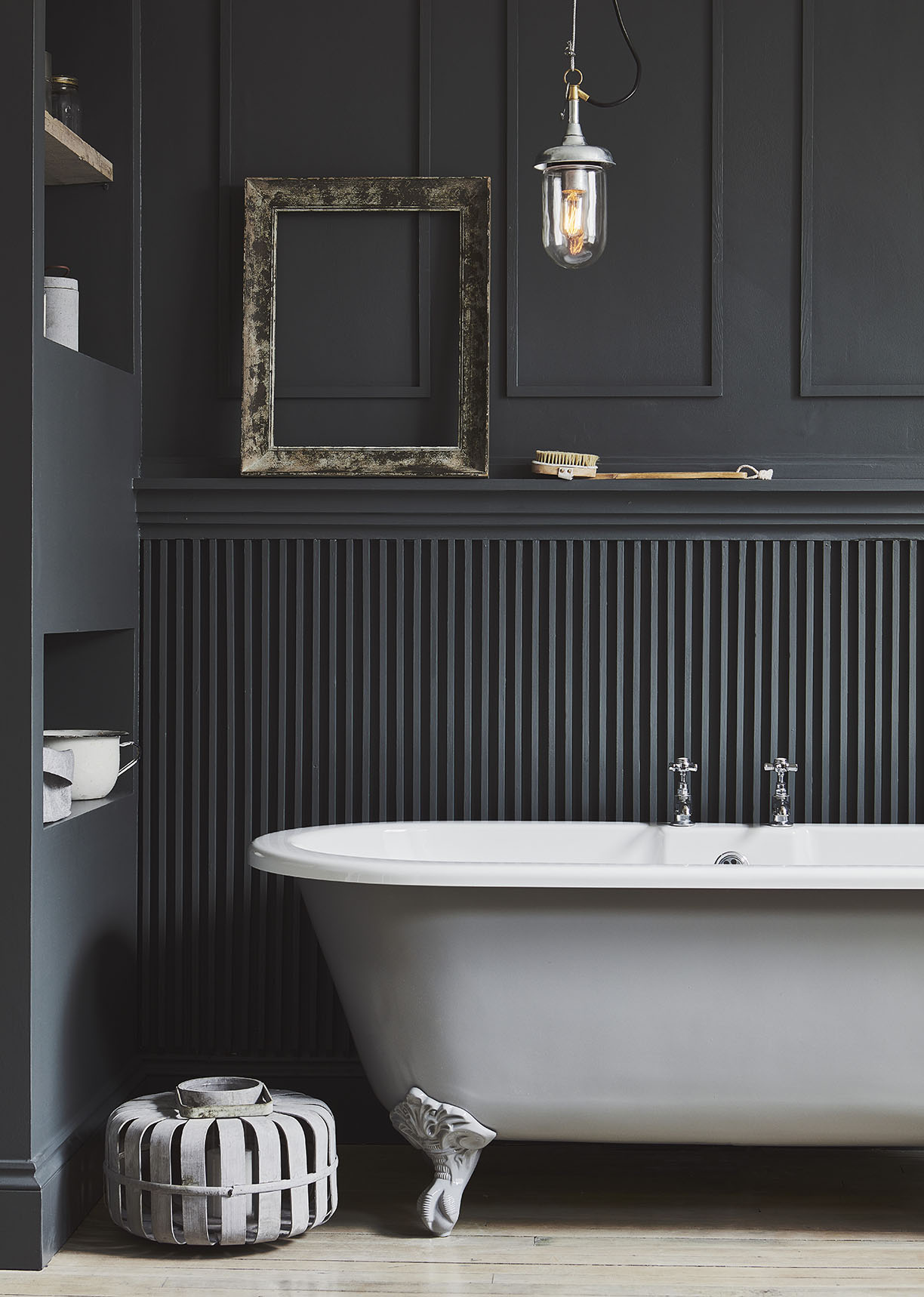
Photo courtesy of Garden Trading
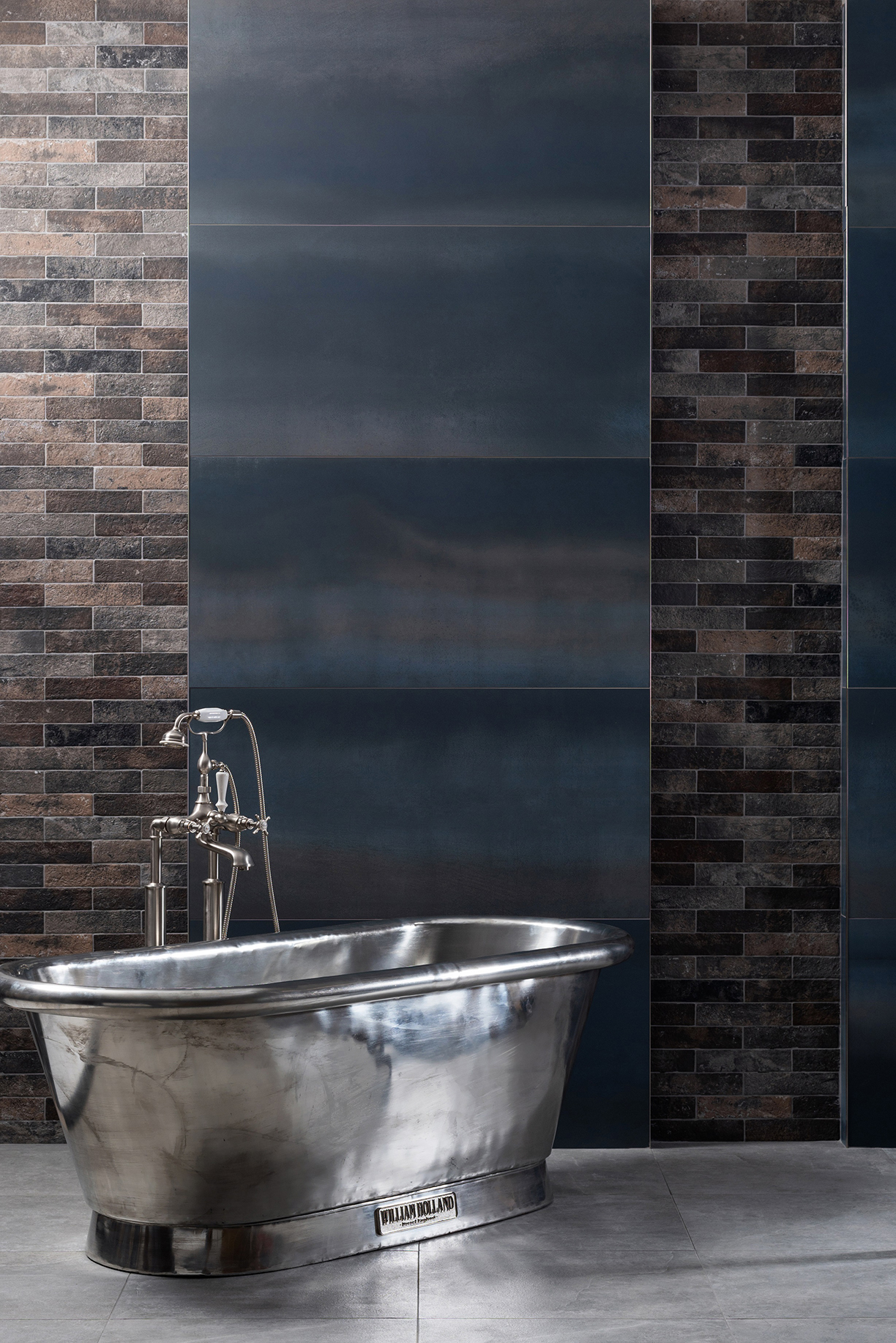
Photo courtesy of Original Style
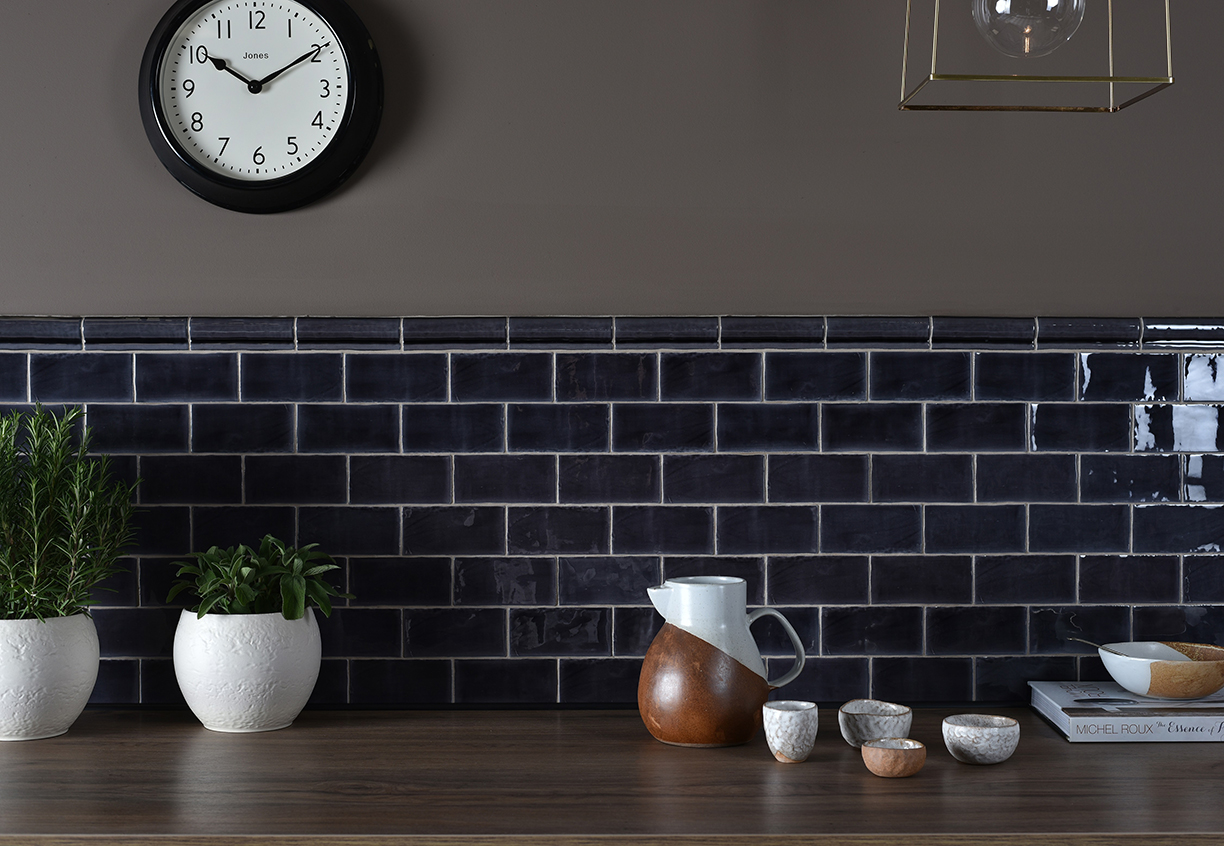
Photo courtesy of Original Style
3. Allowing Tones to Stand Out
When it comes to dark-colored walls, an immediate response may be to counteract the heavier tones with lighter statement pieces. While this can create a beautiful design, it’s important to allow the rich, dark colors to stand out. In this kitchen, there are minimal pieces that are lighter in color, allowing the walls to be full in color and provide a warm and cozy atmosphere.
With a sleek, modern style becoming the new trend in home design, chandelier makers are turning from the traditional designs to modern light fixtures instead. Not only do they add an elegant and modern piece to the room, but they’re becoming pieces of art in their own right.
The creativity that goes into designing and manufacturing these modern chandeliers is pushing the boundaries on the line that constitutes furniture and works of art. With that said, here are some tips on choosing which modern chandelier is best for you:
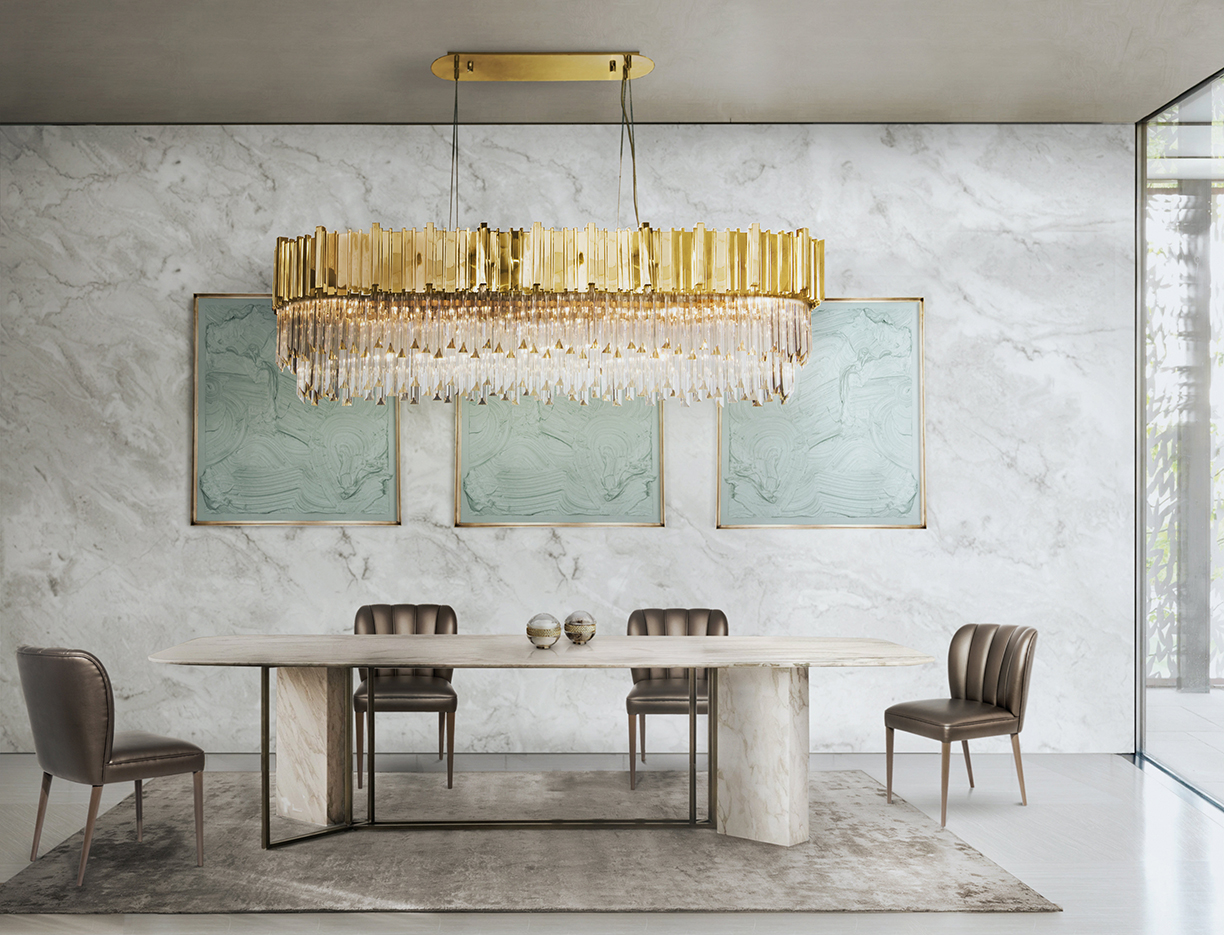
Photo courtesy of Covet NYC
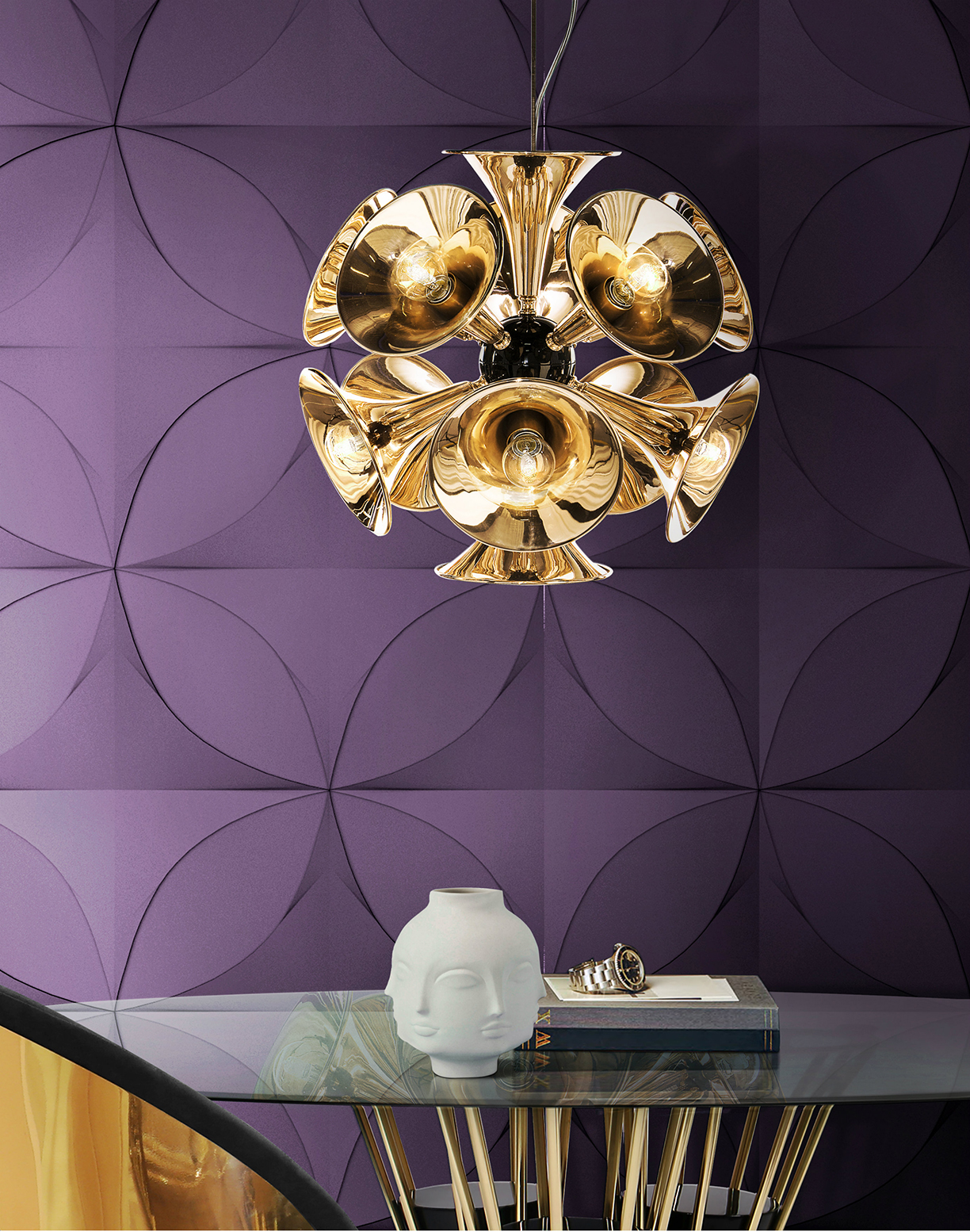
Photo courtesy of DelightFULL
1. Get Creative with Material
With any modern chandelier, the material matters. Getting creative with the material used to create the chandelier can add a great addition to the room’s decor. Creativity is proven to go a long way in designing the perfect modern chandelier.
The Botti pendant lamp, inspired by the American trumpet player Chris Botti, adds a fun twist by using trumpets as the main material of the chandelier. While still luxurious in its style and design, it adds personality and a conversation piece to the space. While the chandelier is more retro in its style, using a creative material and thinking outside of the box can be beneficial for whichever style is preferred.
2. The Space it Resides
Both small and large chandeliers can be a great addition to any space. It’s important, however, to consider the type of space when choosing which modern chandelier to include in it. For a foyer or room with high ceilings, look for a larger chandelier to create a major focal point. In spaces like dining and living rooms, a smaller chandelier will still be a work of art, yet it won’t take away from the rest of the design in the space.
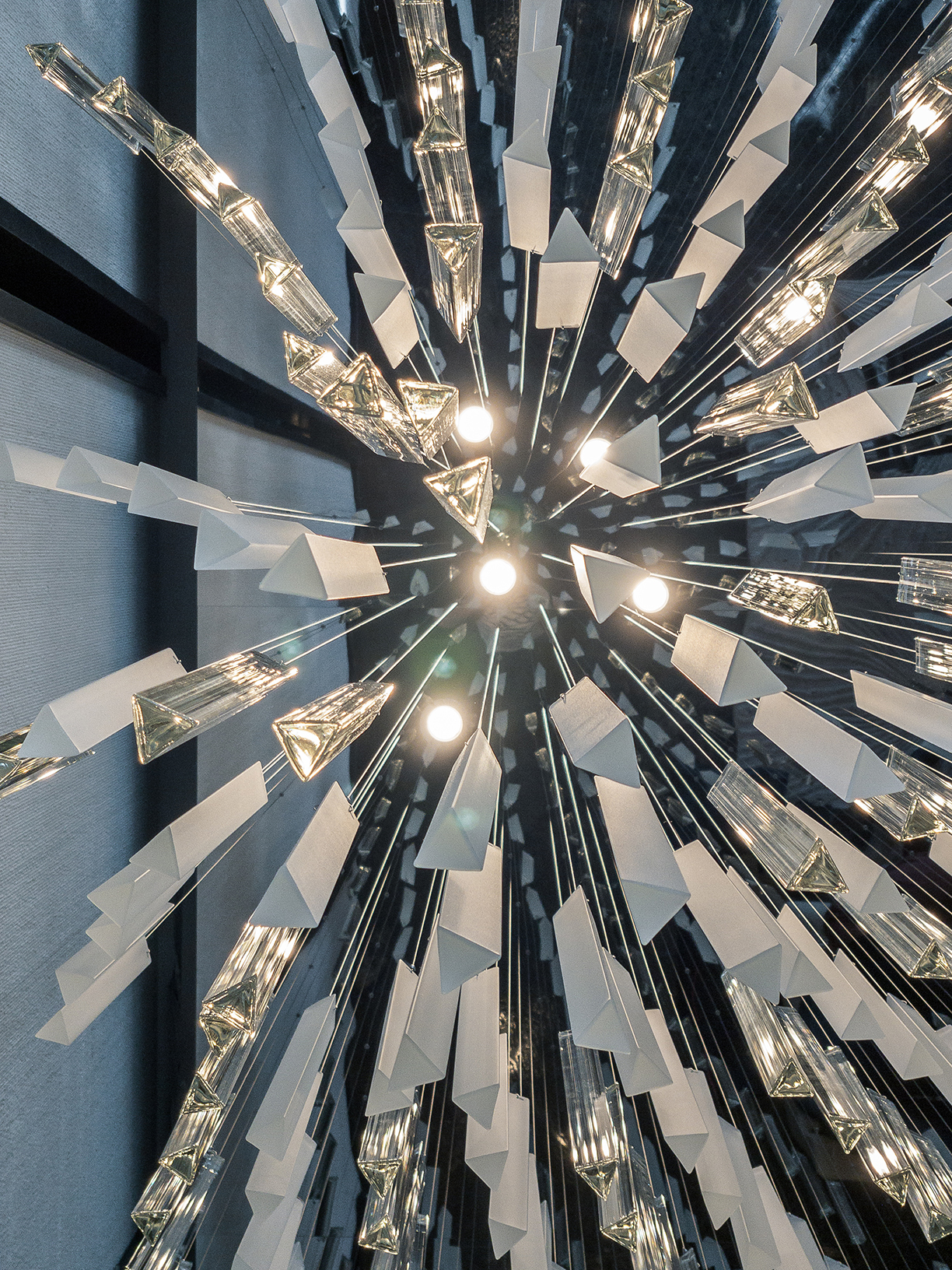
Photos courtesy of Muse Residences
In recent years, more and more hotels and apartment buildings are getting rid of the traditional designs and replacing them with modern and sophisticated styles instead. The modern chandelier in this residential building is certainly the focal point, simply for its sheer size and elegance. When visitors and residents walk into the building, they are in awe of its design.
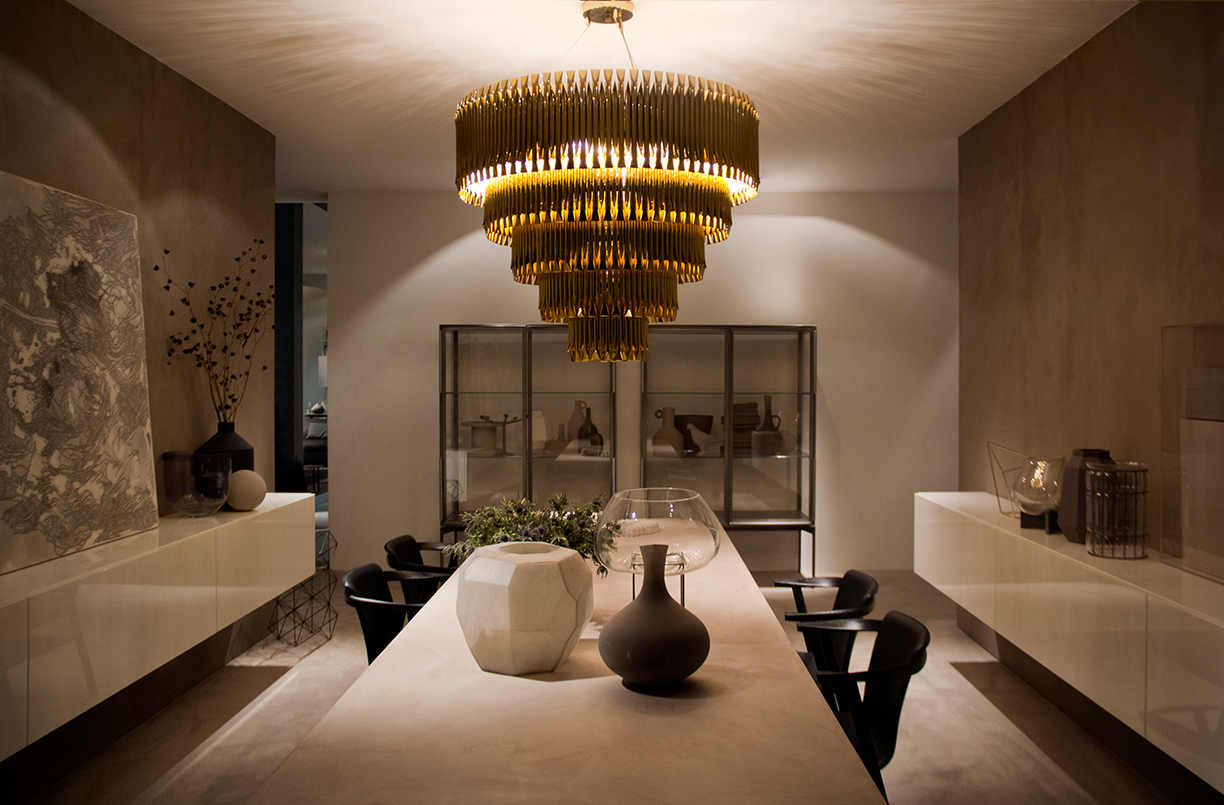
Photos courtesy of DelightFULL
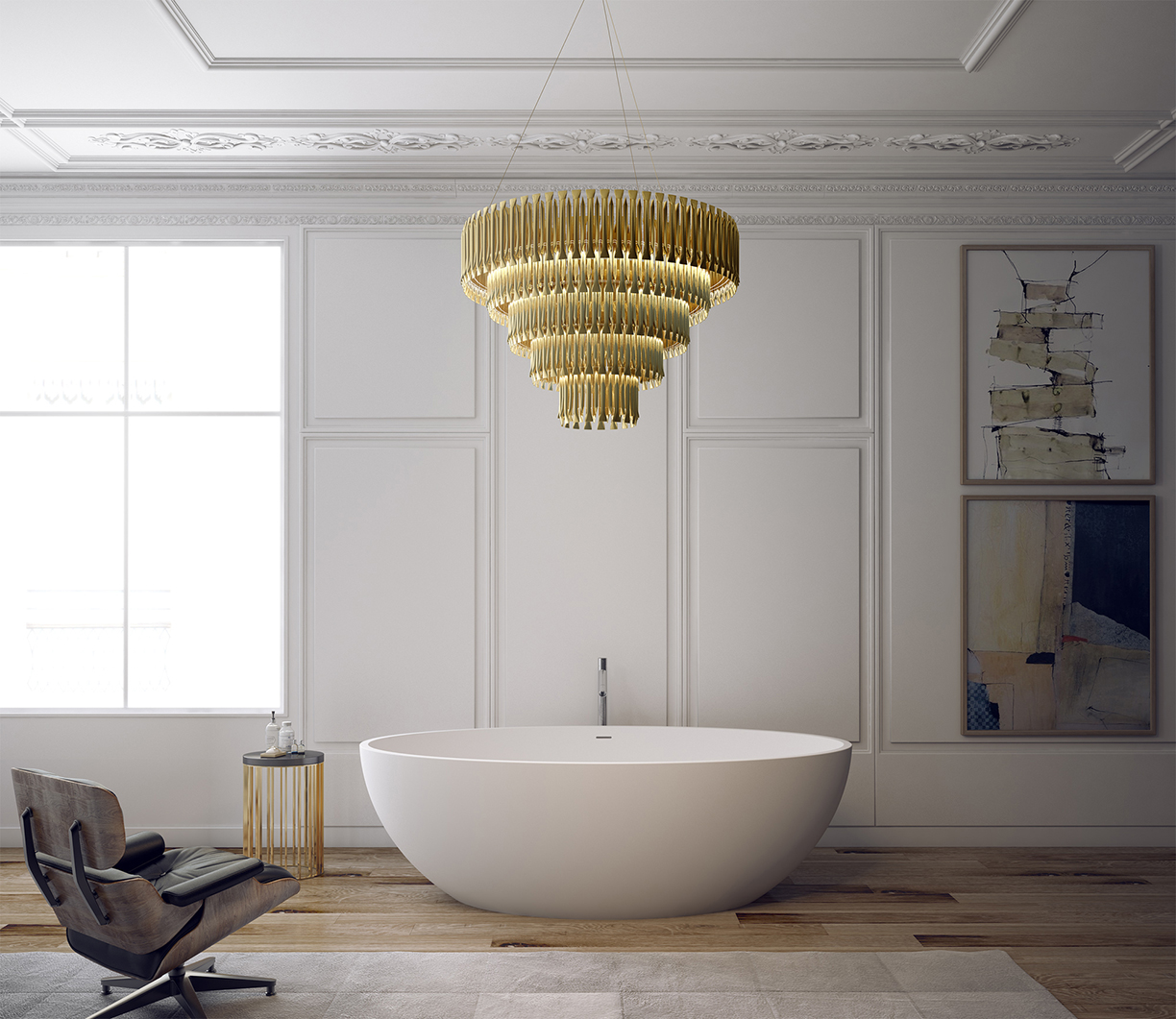
3. The Lighting
In terms of lighting, either a dramatic flair or a softer hue can be a great addition to any space. While the design and material of chandeliers can be similar, the lighting can make a major difference in the atmosphere in the space.
While the first chandelier provides a dramatic light in a darker room, the second provides a more subtle light in a room ample natural light. Both, however, add to the design and atmosphere of the space.
4. A Work of Art
Regardless of the material, design and lighting, it’s crucial to remember the creativity a modern chandelier allows. Whether it’s above a dining table, in the living room as a statement piece or the focal point of the foyer, modern chandeliers aren’t simply light fixtures anymore — they’re works of art.
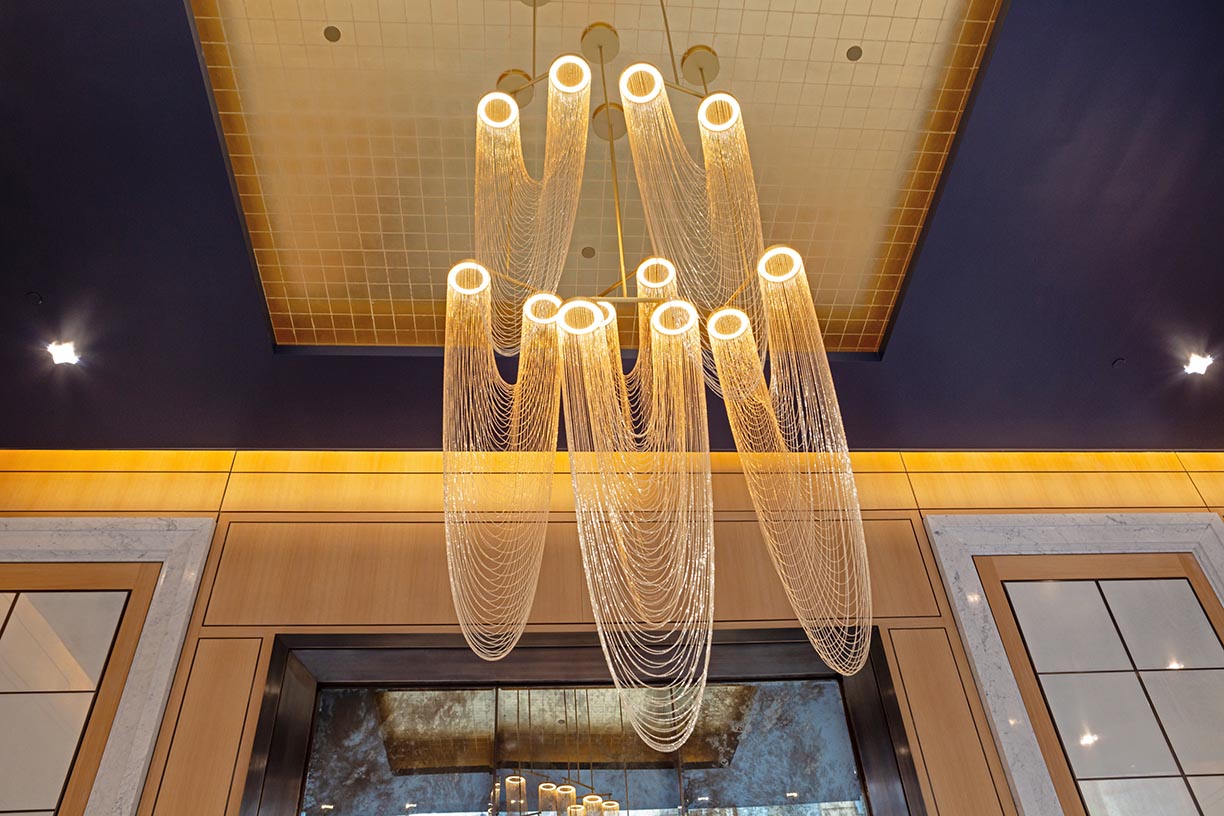
Photo courtesy of The Alyn
Whether you’re organizing that shoe collection that keeps on growing, displaying your endless accessories, or if you’re striving for a clean, minimalist style and feel, a little extra storage never hurt. Even pricey and luxurious apartments in places such as New York City aren’t offering much space.
Get inspired with these storage tips and find the perfect place for everything in your home.
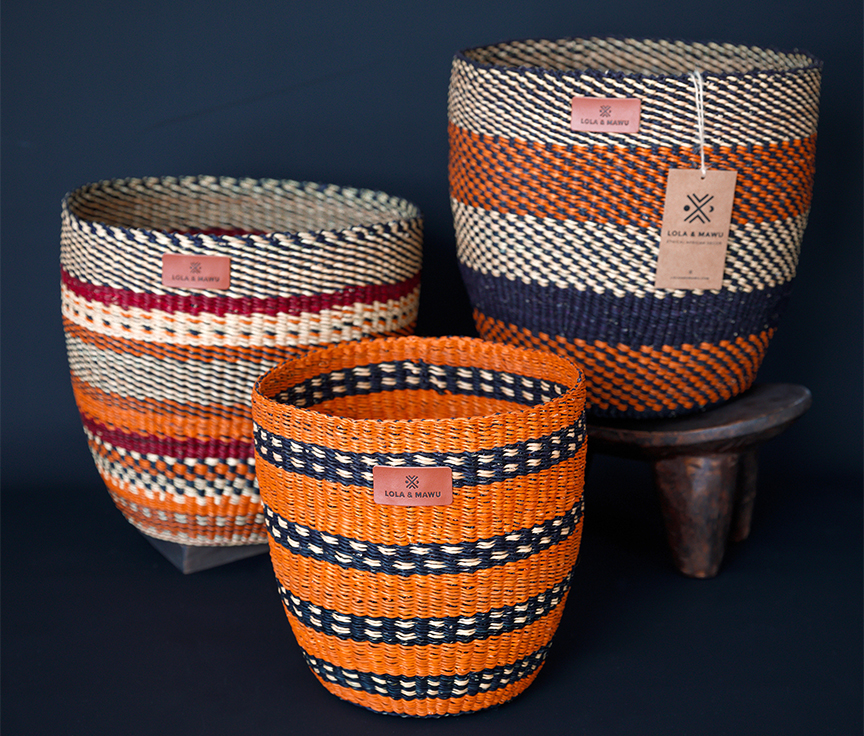
Photo courtesy of Lola & Mawu
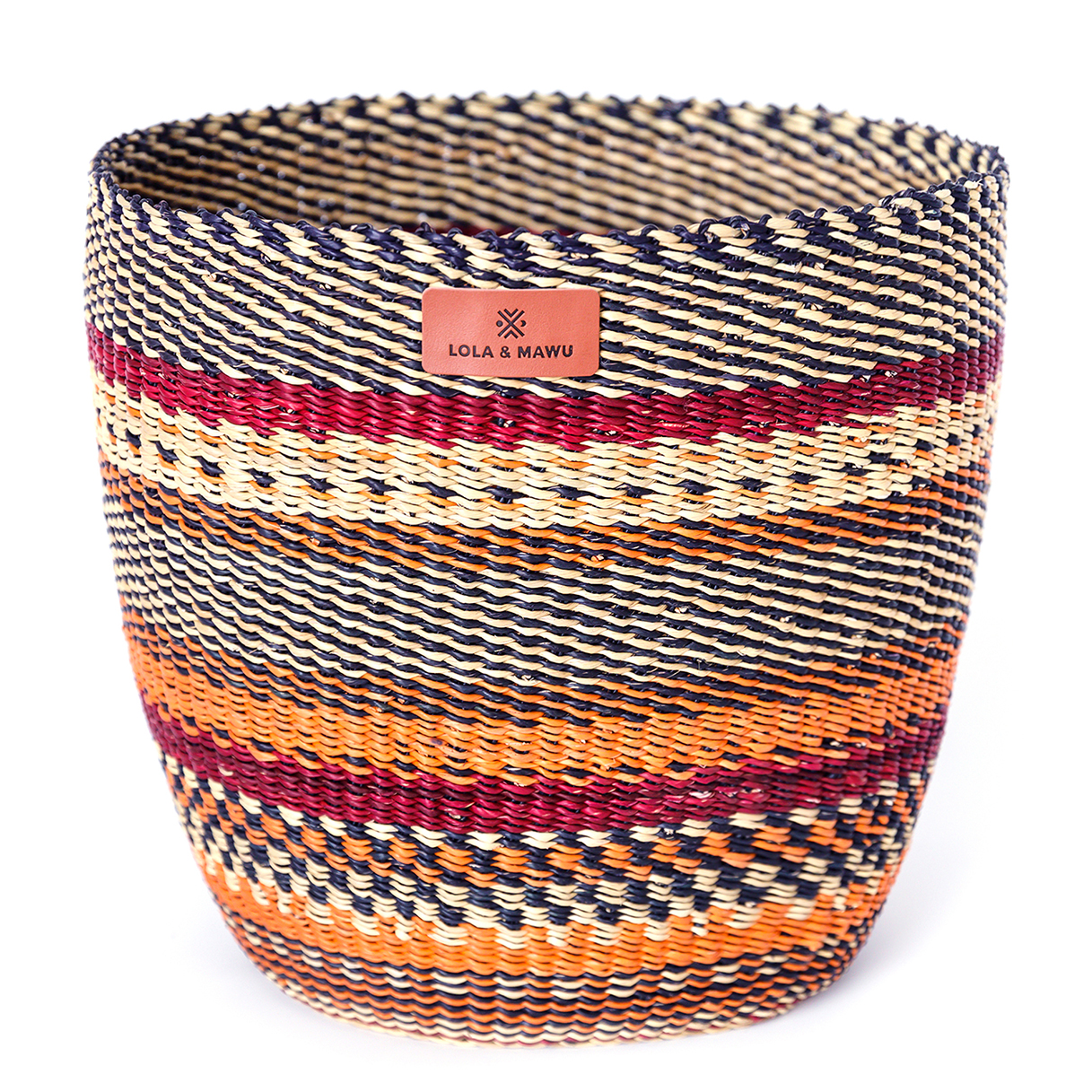
Photo courtesy of Lola & Mawu
Be bold and embrace your own style. Even if you are working toward a more neutral style with clean lines, it’s okay to introduce a few pops of color. Your storage is the perfect place to try new color schemes and patterns because they are easy to switch out and adjust with your growing taste and the changing seasons.
Portable, movable storage is the best kind of storage. The convenience of wheels should never be overlooked. If you’re hosting an event, entertaining guests, or simply looking for a fresh feel, storage that can be moved make the process of change seamless. Simply wheel a fun, stylish cart into the next room for all of your storage needs.
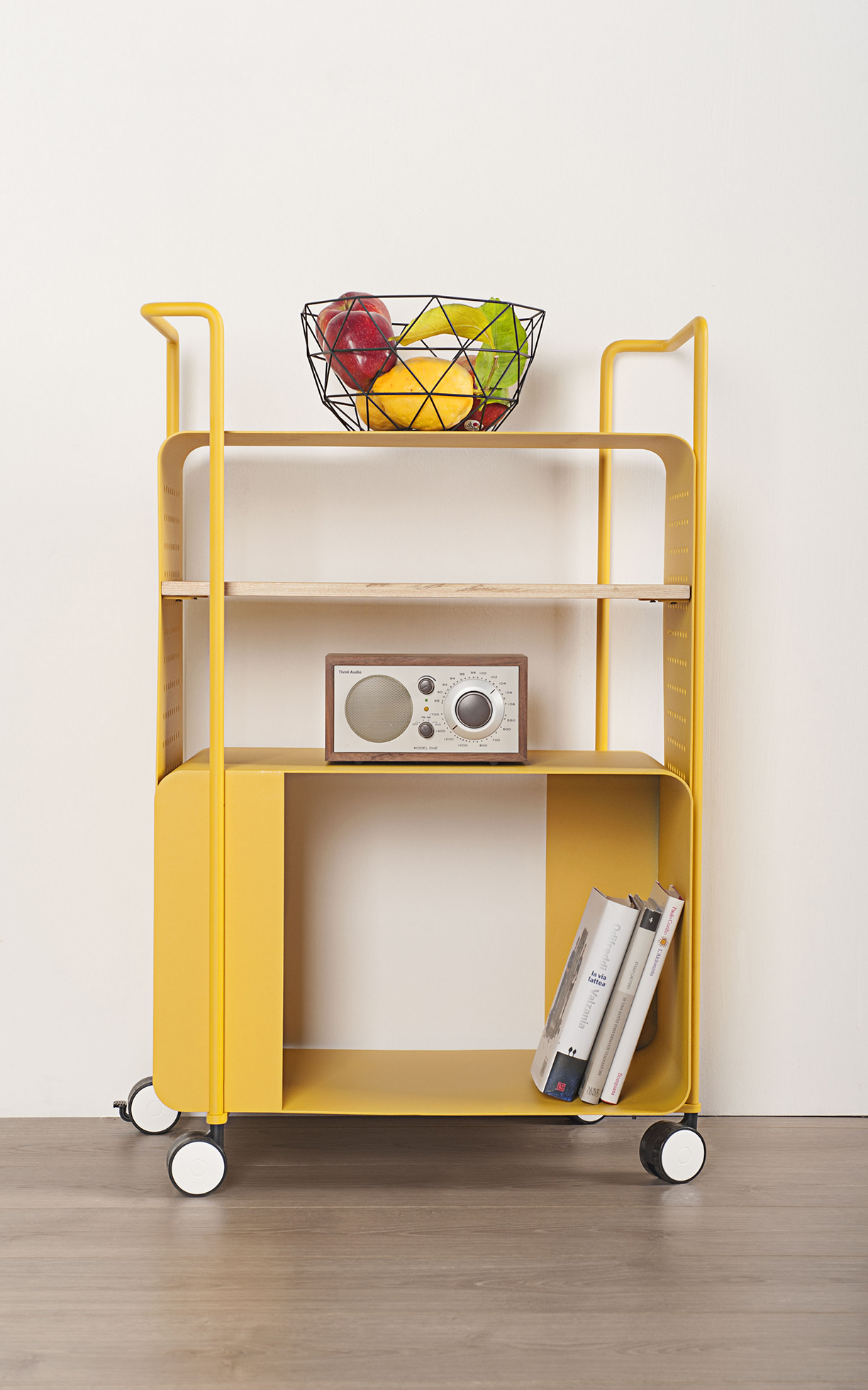
Photo courtesy of Lime Lace
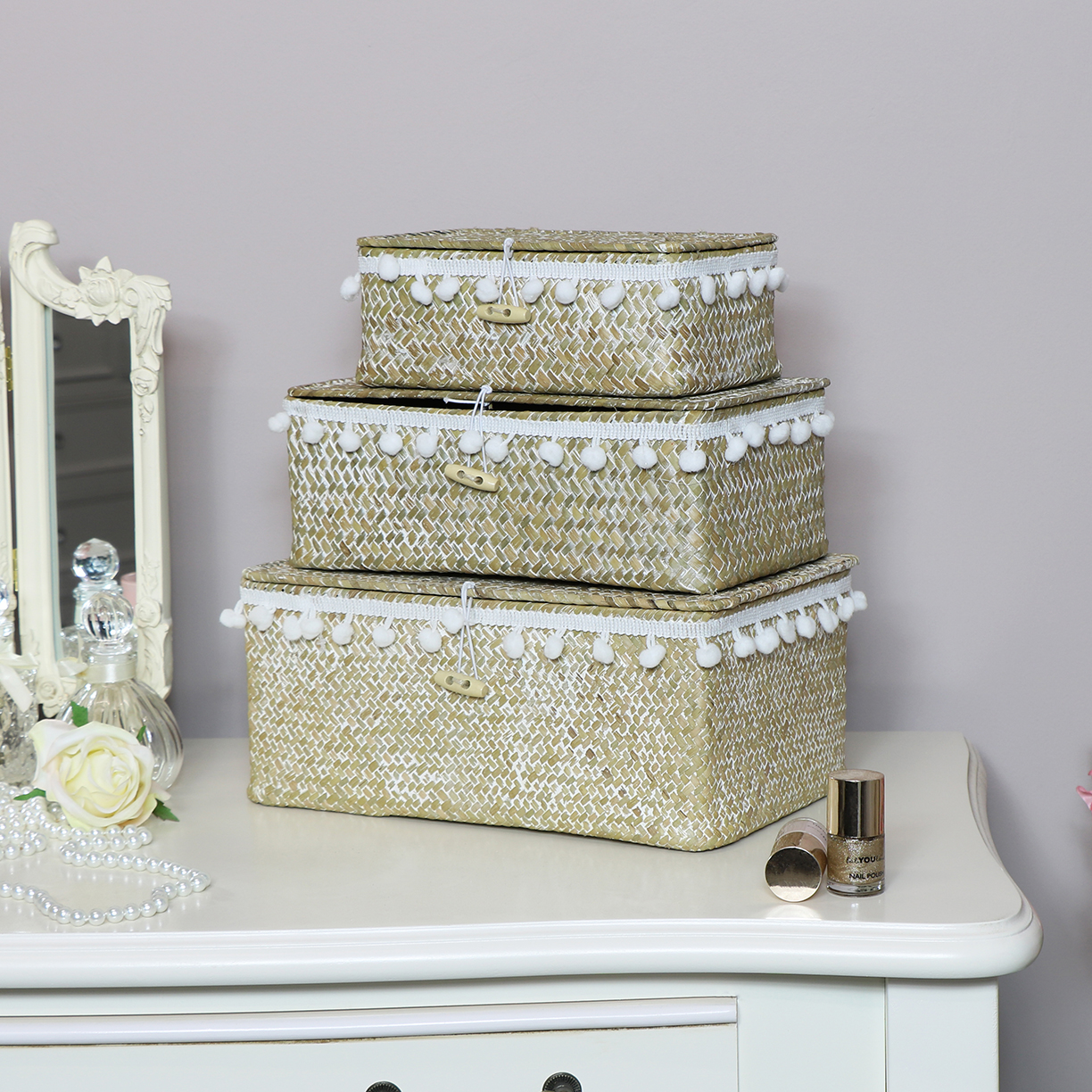
Photo courtesy of Melody Maison
There’s no shame in falling in love with storage space that is not the most functional. A few stacked baskets with a playful touch of fringe is a nice addition to your bedroom or bathroom. The layered look adds complexity and style to your room, and it can still be functional for small items and accessories.
When in doubt, try under the bed. The space below your bed was made for storing blankets, shoes, winter sweaters and more. Built-in storage is even less noticeable under your bed and ensures that you’ll always have a little extra room to stash your bulkier items or less used items. These clever built-in draws will help clean up any bedroom.
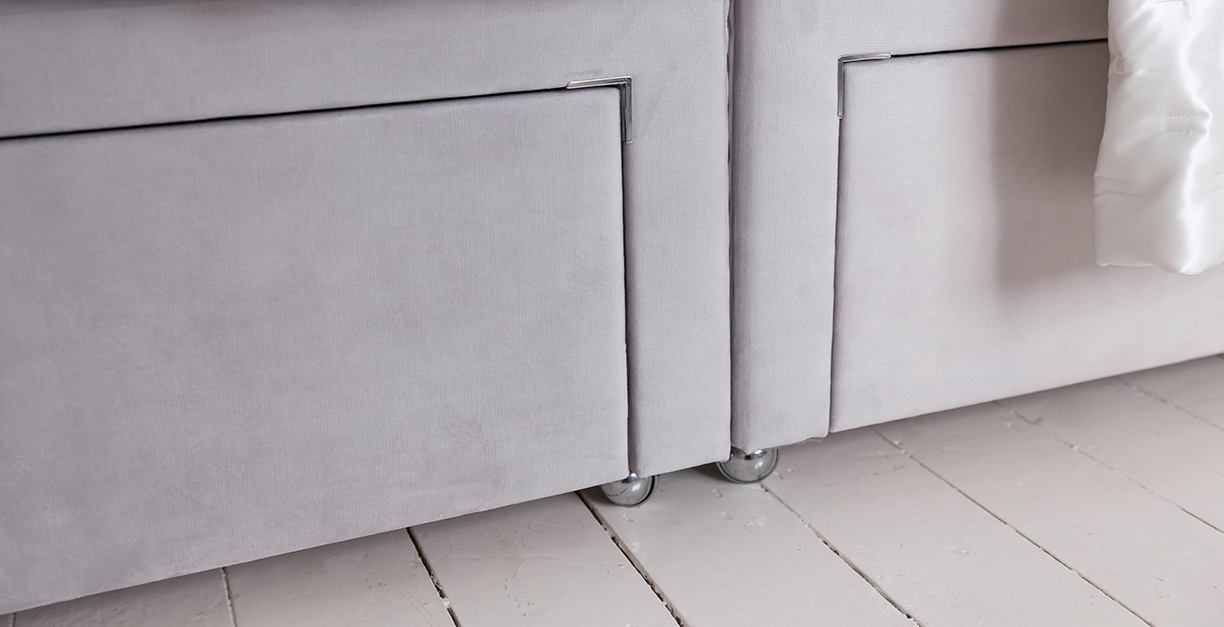
Photo courtesy of The French Bedroom Co.
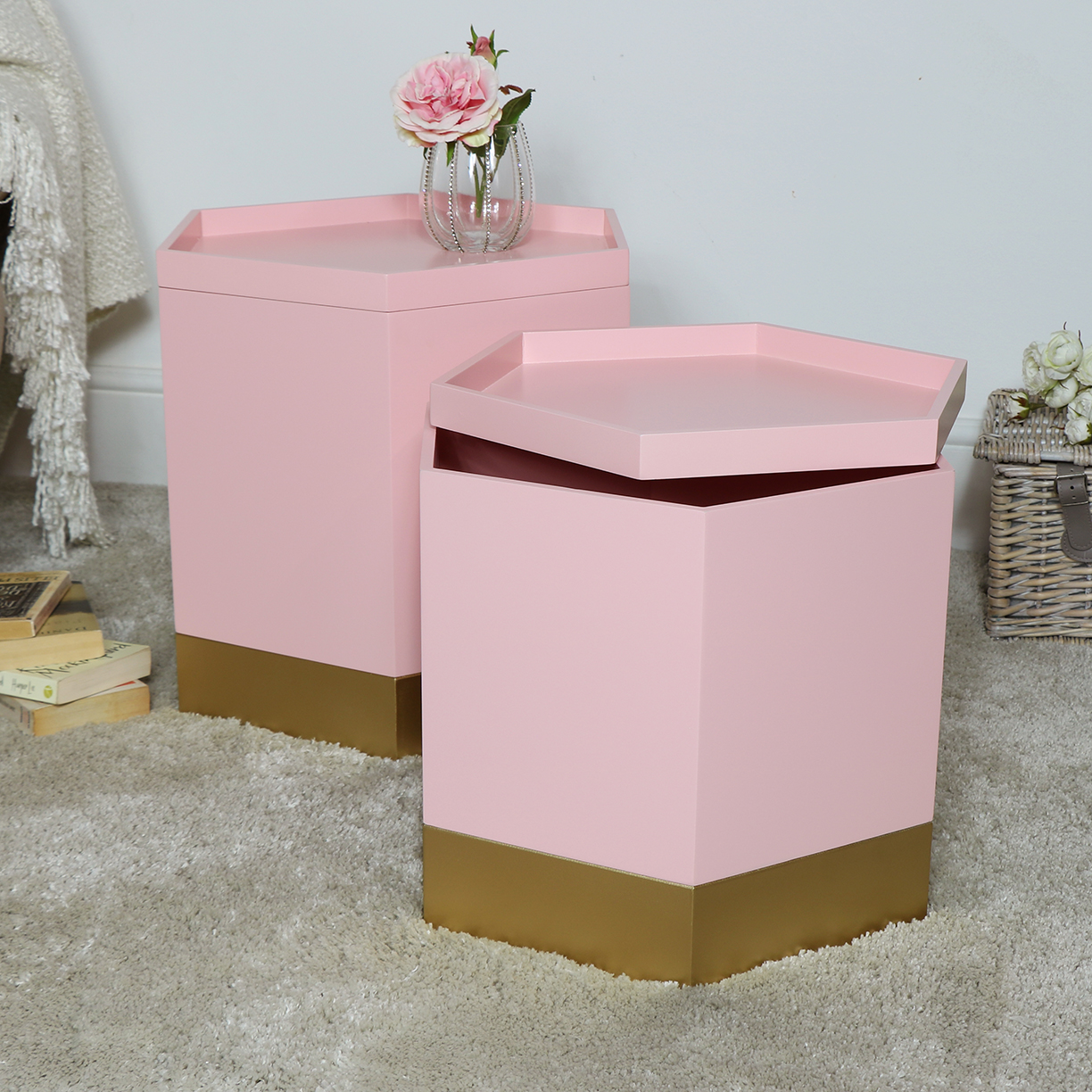
Photos courtesy of Melody Maison
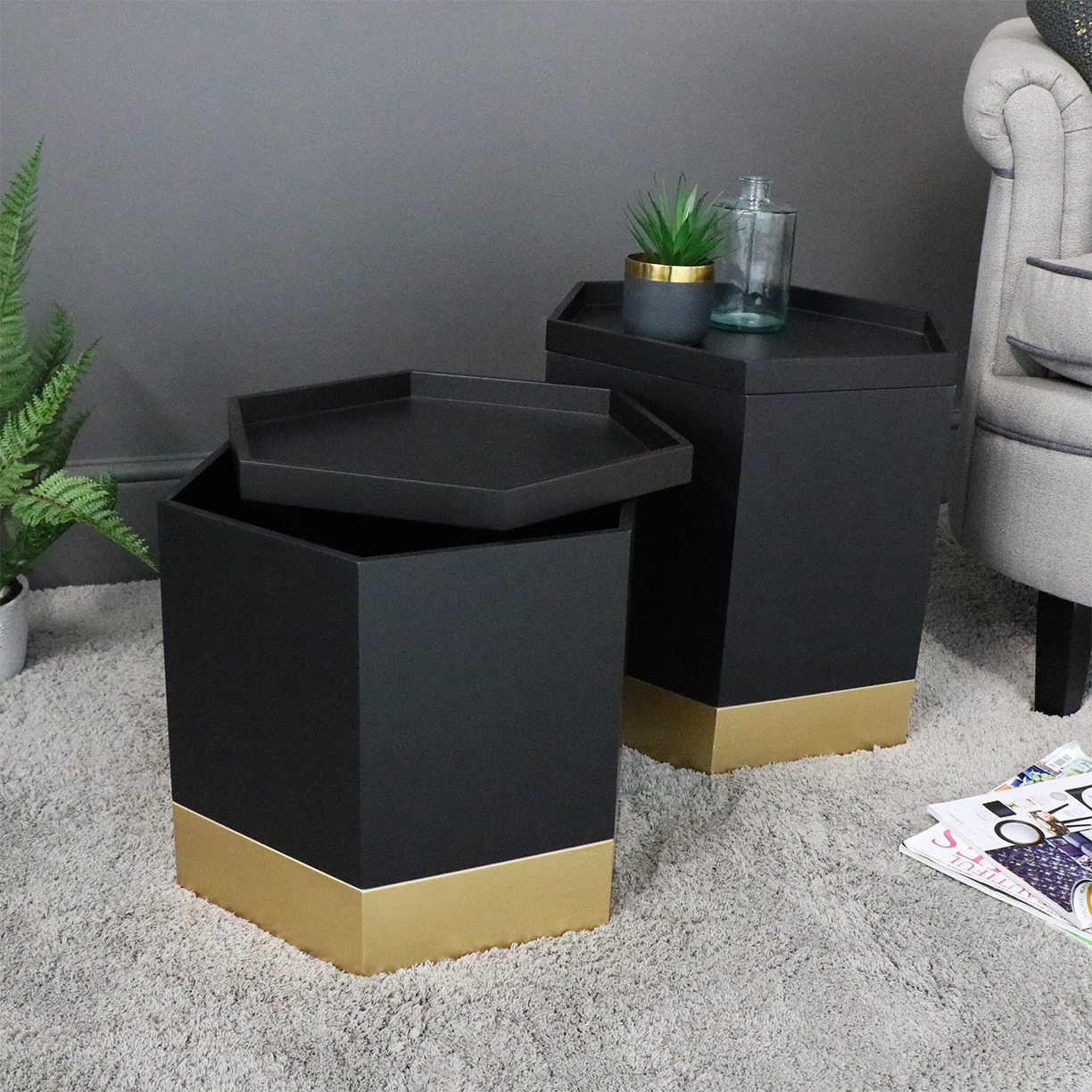
Multi-functional is never a bad thing. Side tables, ottomans, benches, and other furniture that offer a hidden storage section is a dream come true. Forget searching for bulky storage options that take up space and ruin your decor. Find a charming side table that serves as a storage unit to declutter any room.
Lauren Behfarin saw a need for sophisticated design geared toward growing families.
Arriving home from the hospital with your newborn for the first time, rocking your infant child back to sleep, reading a book with your talkative toddler — a nursery will become the setting for endless, lasting memories as your child grows.
From falling in love with their first smile to cheering along their first steps, parents will inevitability spend many heartwarming hours in their child’s nursery — which means the space should bring joy to both parents and children for years to come.
Designing the perfect nursery may seem intimidating, but luckily this interior designer understands the importance of creating a space filled with love, care and joy.
Five years ago, Lauren Behfarin designed her daughter’s nursery in preparation for her first child’s arrival. She quickly discovered a gap in family-friendly design, and created Lauren Behfarin Design. “Once I had a family, I wanted to do more work geared toward children and younger families,” says Behfarin, who previously worked for Drew McGukin Interiors.
With a growing clientele, the trendy NYC-based interior design firm now designs spaces for new parents and growing families that are vibrant and sophisticated yet comfortable and livable. Understanding the emotion and love that goes into each space created for a child, Behfarin has found that “nurseries and children’s spaces often become an extension of a home.”
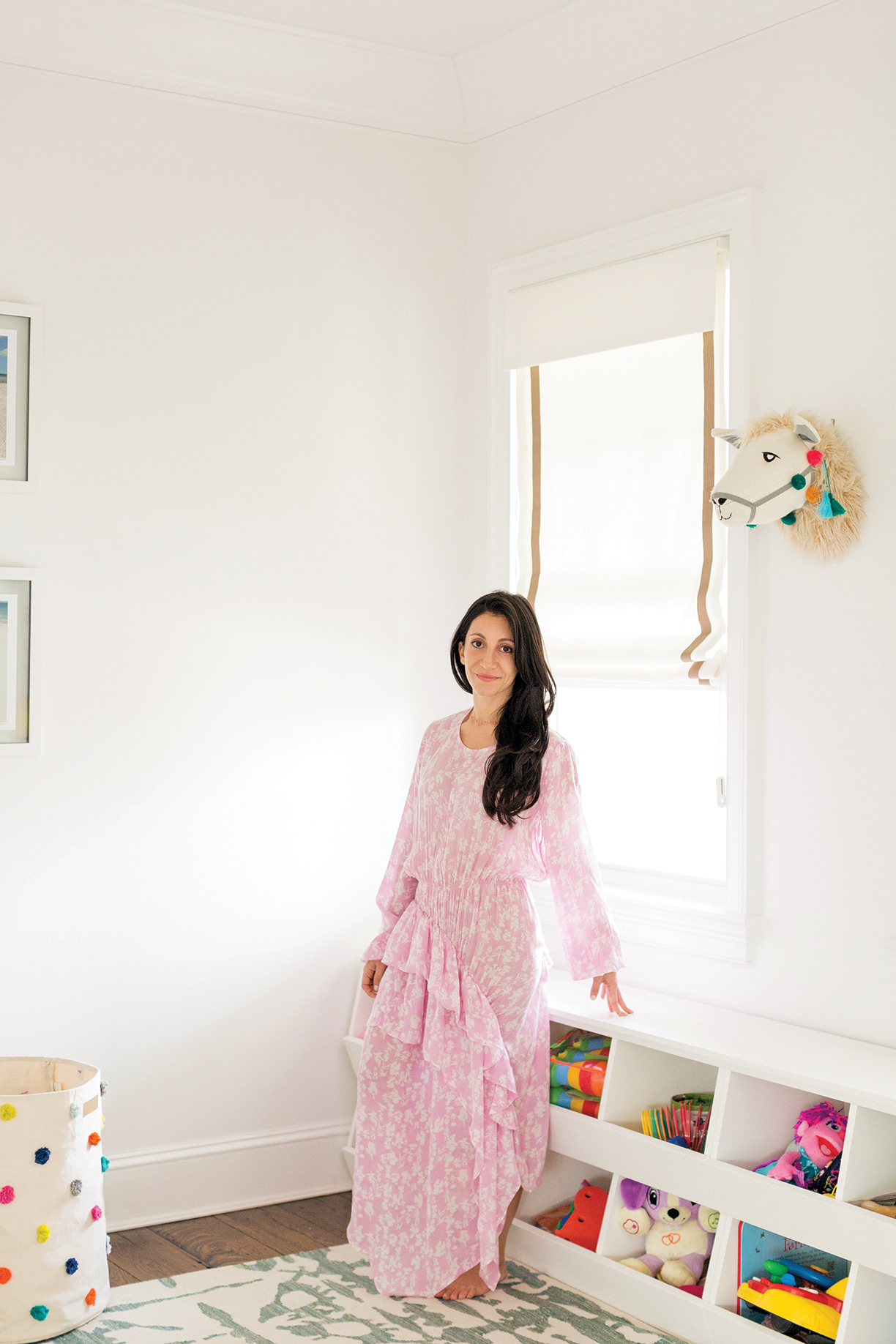
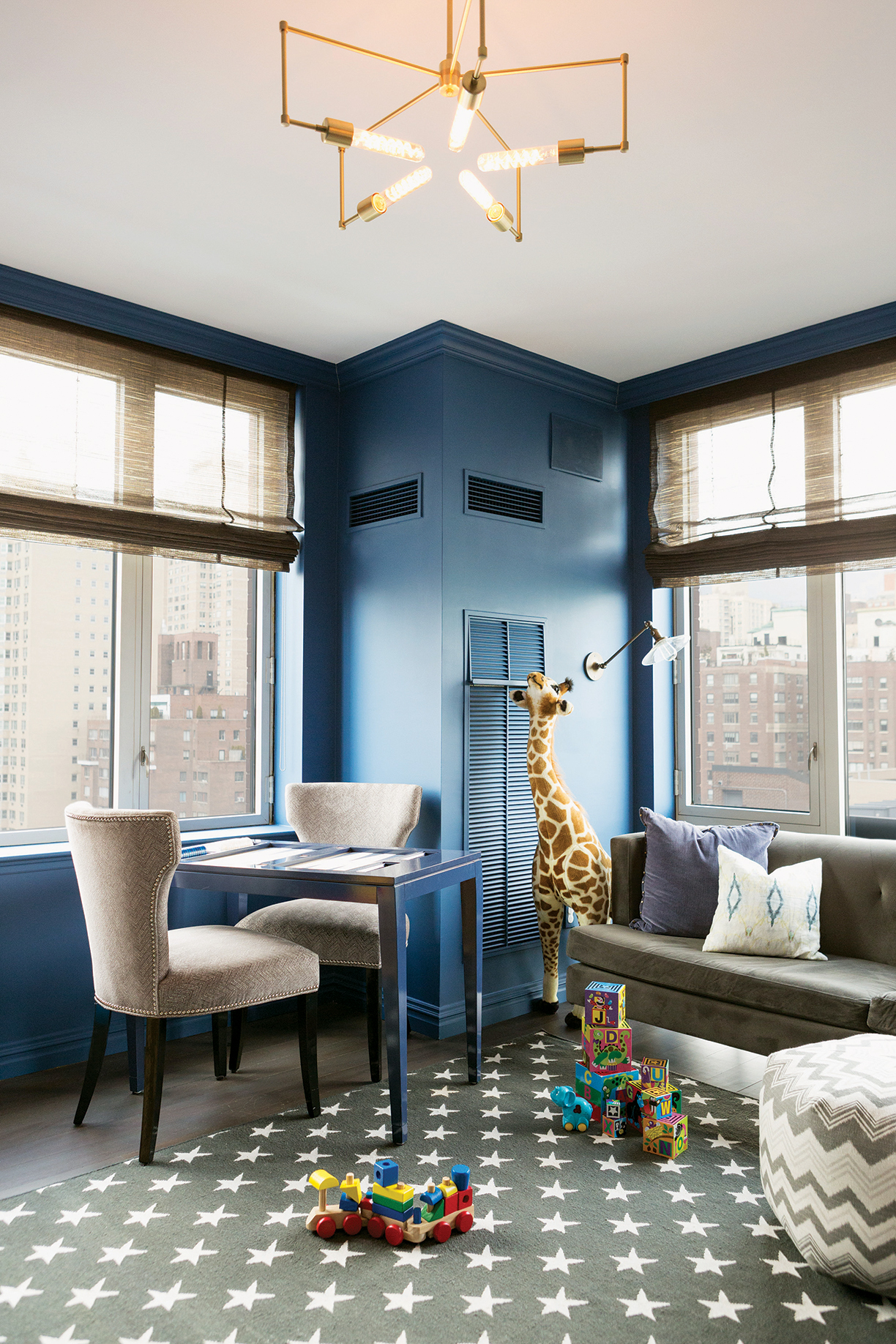
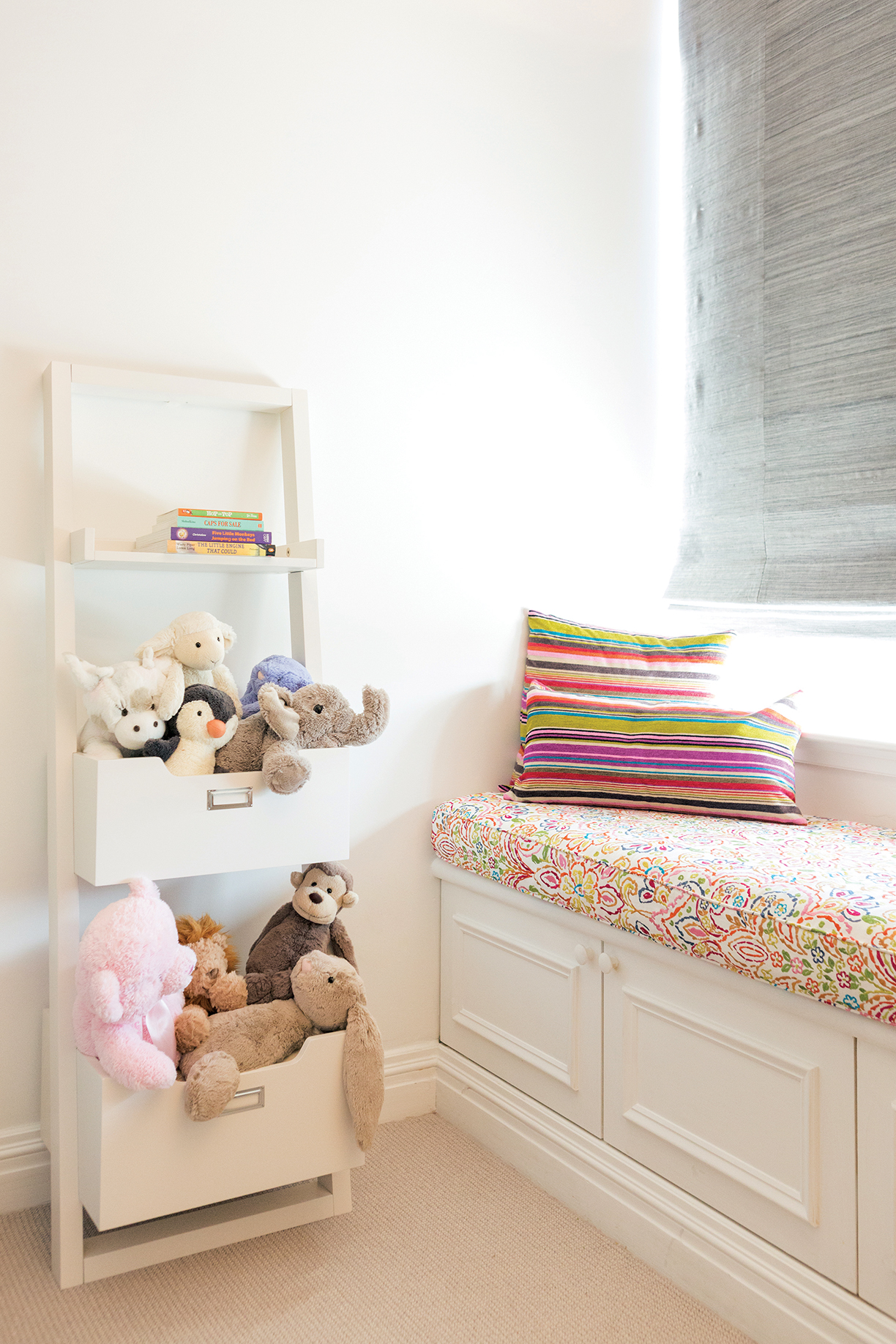
Although she designs a range of spaces, Behfarin’s favorite projects are always nurseries for first-time parents. “Nurseries are always so fun, and so full of hope, life and excitement. It is such a special time to watch new mothers experience pregnancy and for parents to experience a baby for the first time. We are always honored when families include us in that time,” says Behfarin, who works alongside her associate, Abby Gruman.
As a parent of two, Behfarin values convenience and function. After designing a nursery, first-time parents may soon realize that a makeover is required less than two years later. In order to keep the transition as simple as possible, Behfarin tries to “anticipate the next steps of a child’s life” with her designs.
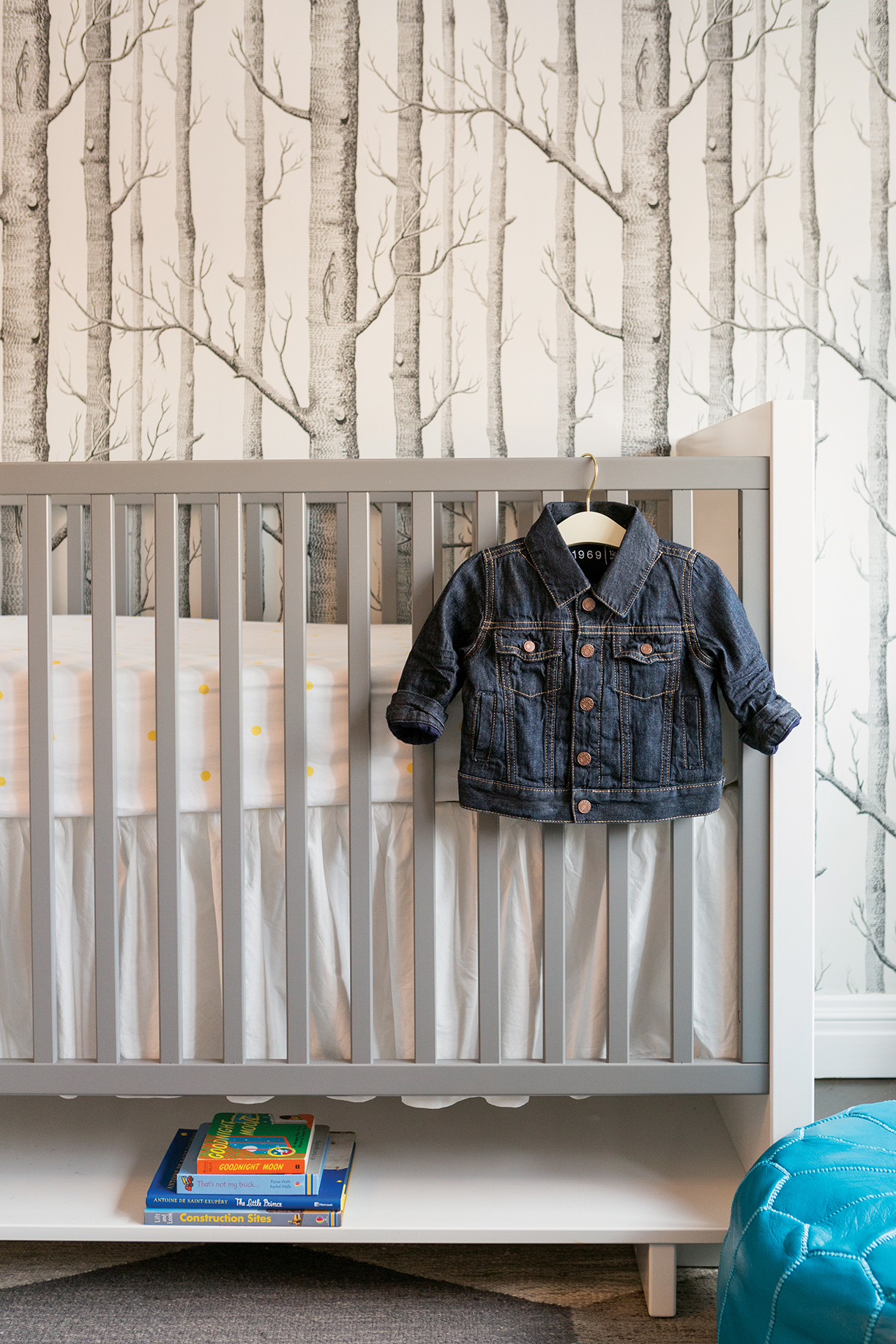
Using various patterns, textures and bold colors, the team is sure to incorporate fun elements that feel young while also considering the next five or 10 years of a child’s life. “As I experience these phases with my own children, I am really learning what works and what does not work long-term in a space. We are learning what elements transition with your child and which do not,” Behfarin says.
Born and raised in Manhattan, Behfarin also understands the need for storage in a compact apartment. Utilizing items such as cribs that turn into toddler beds or bunk beds that double as two twins beds, Behfarin “makes sure that clients have the best items for their children to grow.”
Whether it’s furniture that won’t cause injuries to a newborn or toys that won’t grow tiresome, first-time parents often look to Behfarin and her team for more than simple design tips.
“They’re looking for great design, but they are also looking for advice. We take relationships to heart when we have clients who are experiencing this for the first time,” Behfarin says. “I am here to guide, push and challenge clients, but I always deliver something that they love.”
How to Design the Perfect Nursery
Accent Walls — “There is always an accent wall, whether it’s a really cool decal, cool paint color or interesting wallpaper,” Behfarin says. “There should always be a fun backdrop to one of the walls in a nursery, and it’s usually the one with the crib.”
Minimal Themes — Cautious to not take a theme too far, Behfarin always suggests incorporating components from a theme, such as accent pieces or different colors. “There are ways to bring in a theme that are not too thematic,” she notes.
Neutral Colors — “There has been a shift toward gender neutral colors, such as grays, creams and whites,” Behfarin says. “People are prioritizing style. The standard pink and baby blue are not popular right now, and I think it is because style, form and function are so big in the city right now.”
Acrylics — This year, Behfarin is seeing a lot acrylics. “Homeowners are loving acrylic cribs with acrylic bars, or chairs with acrylic legs,” she explains. “Acrylic accents have shown up a more recently, I think as way to make a nursery modern.”
Organized Spaces — Whether it is a bunk bed with shelves, a coffee table with compartments or an ottoman with storage inside, Behfarin appreciates and understands the fluidity of space. “Homeowners are constantly reimagining how their space is being used,” she explains. “The hustle and bustle of the city has caused us to pay attention to creative and innovate ways to save space.”
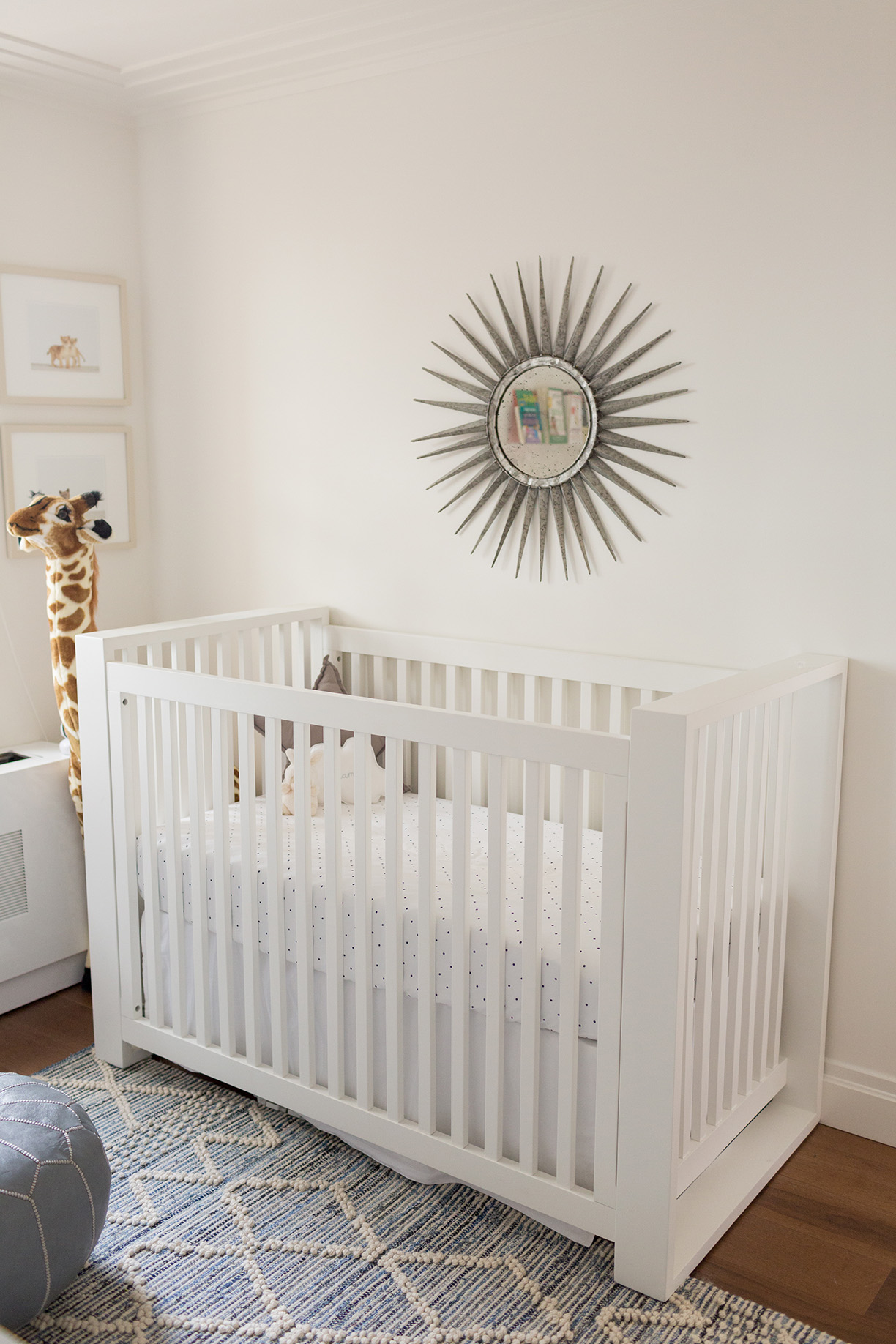
Transform your space with the perfect area rug. Trust stylish finished designs or customize your space with a tailored project.


Customize Until You’re Content
Rug’Society offers a bespoke customization service that is flexible and fun. Customers choose from a variety of colors, shapes, patterns, and textures to create a rug they can enjoy for years to come. The company also offers the help of a brand expert to guide you through the process.
Complete any room in your home with a rug that is uniquely you. Whether you’re looking for warm colors and plush textures, or an elegant neutral rug, there’s plenty from which to choose.

Choose the Right Rug for You
Bare floors are the perfect canvas for an inspiring, conversation-starting area rug and they are often a focal point in a room. Choose a larger area rug to create a gathering space in your living room.
For the bedroom, create a cozy domain by placing a rug under your bed allowing it to extend forward. This can give the appearance of a bigger space full of comfort.
Consider what type of traffic a rug will endure before purchasing. If you need a rug for your living room, remember to choose something that can withstand the occasional coffee spill or stray crumb.
Darker colors, whether they are on your walls or your floor tend to make a space feel smaller, while lighter shades can open a room up, making it feel larger.
Place you’re furniture along the edges of a beautiful rug making it visible for you and your guests to fully enjoy. This also helps create a more spacious feel.
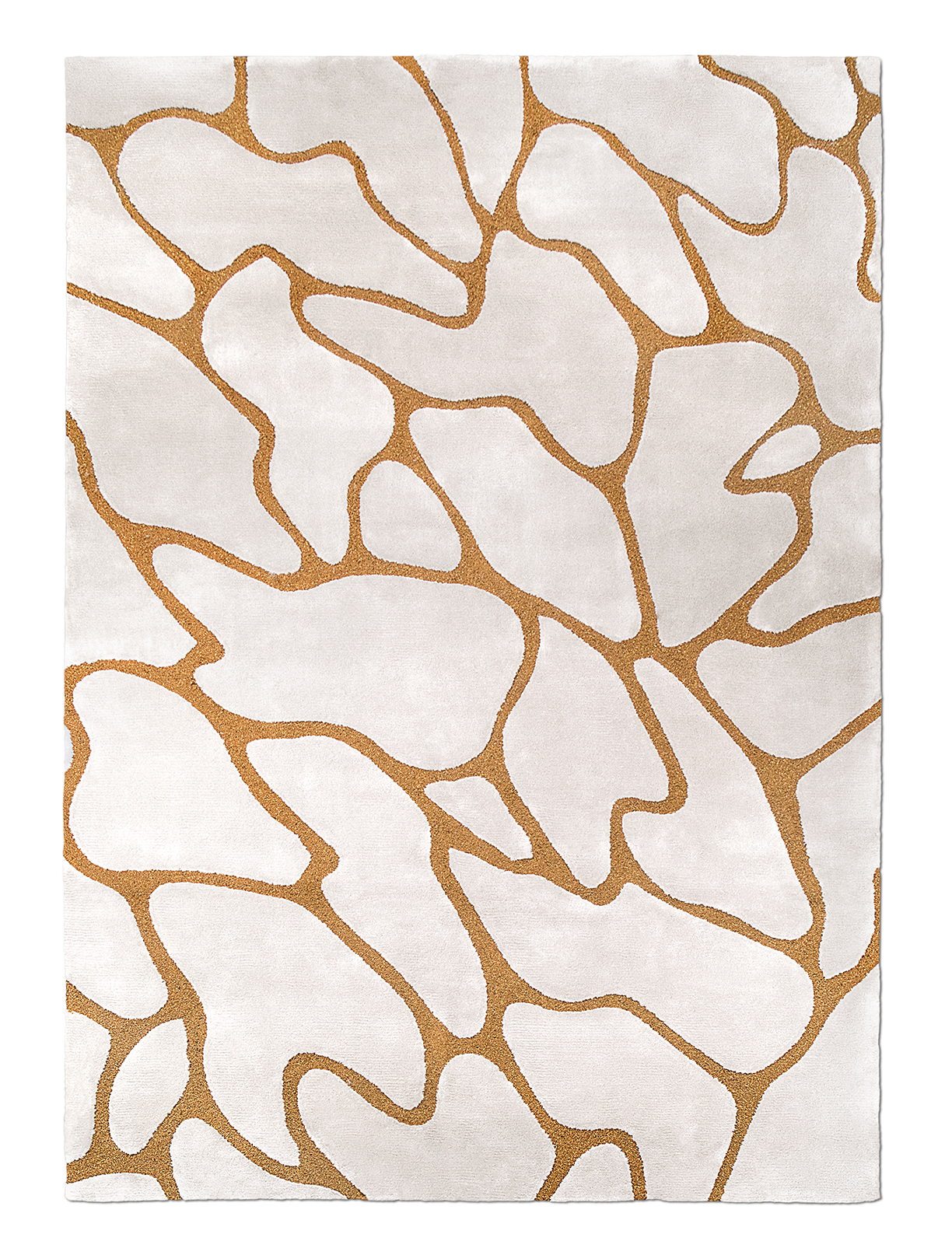
Trends You Don’t Want to Miss
Neutral Colors — discreet tones can add an elegant touch.

Asymmetrical — the trend breaks tradition with eye-catching designs.

New Vintage — classic themes mix perfectly with modern elements.

Neo-Cubism — geometric shapes and 20th-century avant-garde expressions.

Photos by Rug’Society
Trends and styles traditionally fade out of the limelight only to resurface a few generations later, usually with a few twists and fresh perspectives. But retro themes and designs remain popular and are now making an appearance in the realm of luxury.
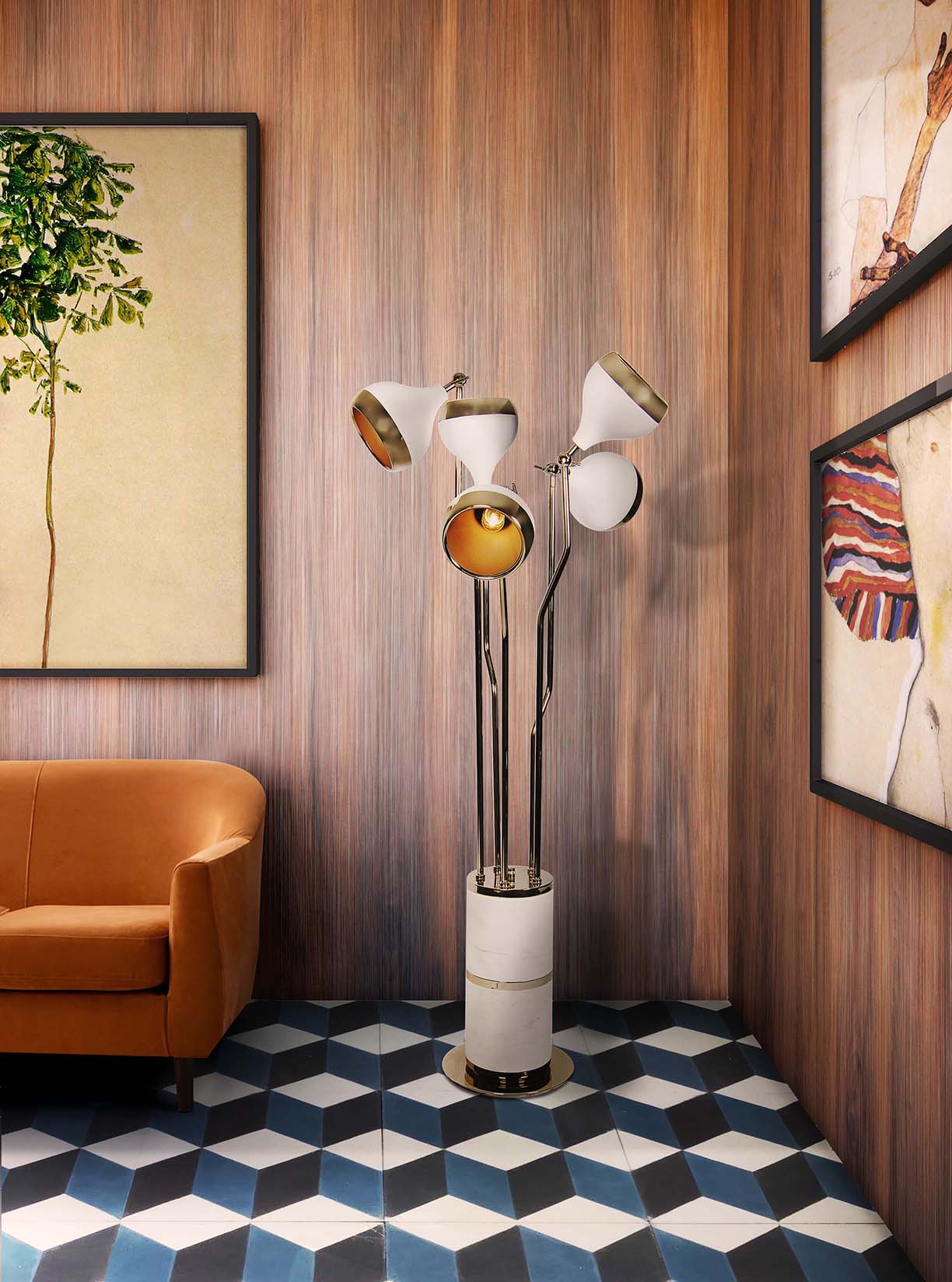
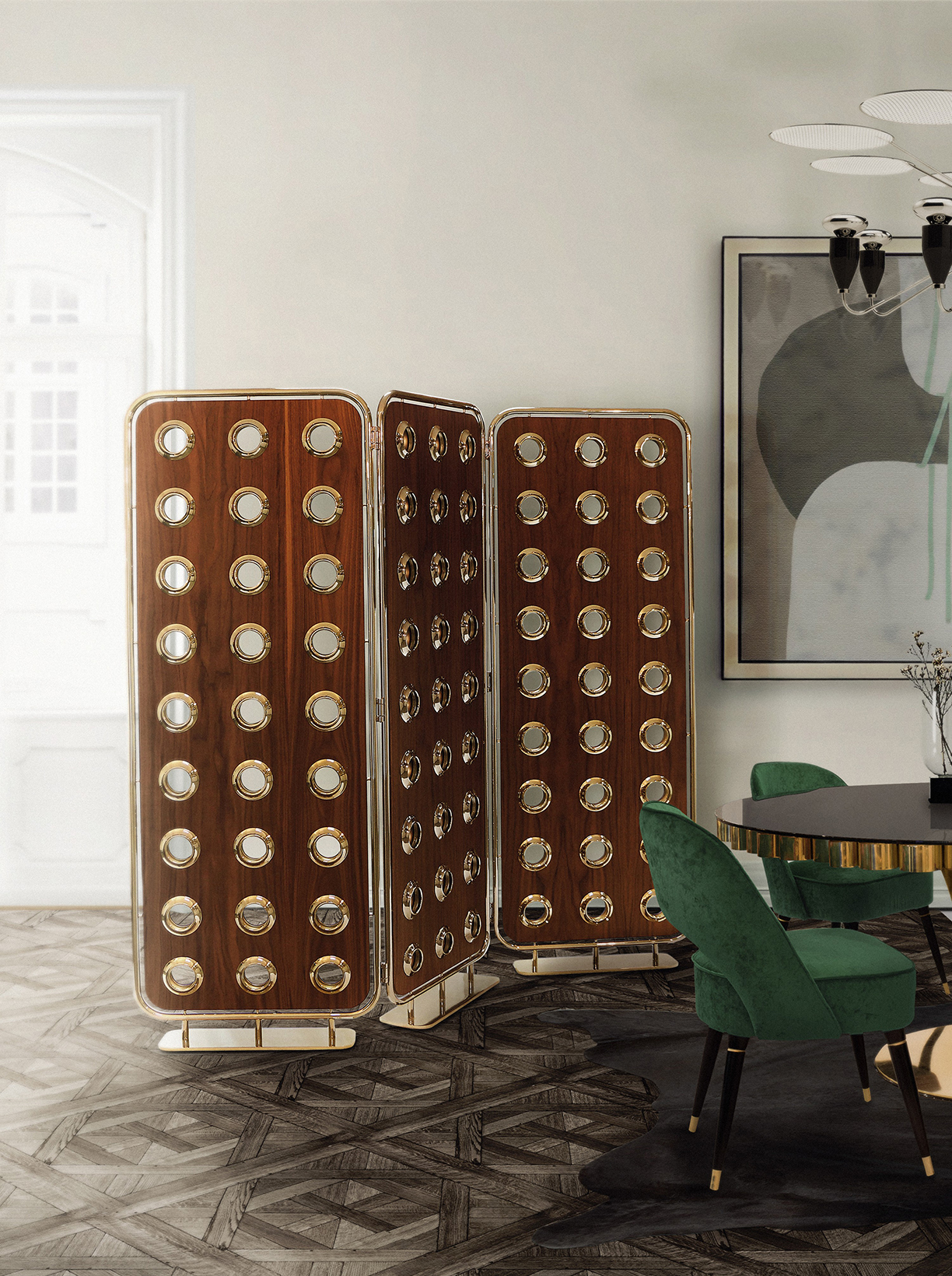
Photo courtesy of DelightFULL
Photo courtesy of Essential Home
Incorporate Brass
Overall, brass contributes to a classical ambiance and can complete the vintage look you’ve been searching for.
A vintage floor lamp will fit perfectly in your mid-century modern living room or vintage retro design hallway. With a structure made in polished Estremoz marble and with multiple lampshades made in brass and aluminum, this floor light is a modern lamp full of grace and charm.
The Monocles Screen is a refined room divider. The folding brass structure holds three walnut panels with brass holes that let you glimpse into the other side. Stylish and functional like no other.
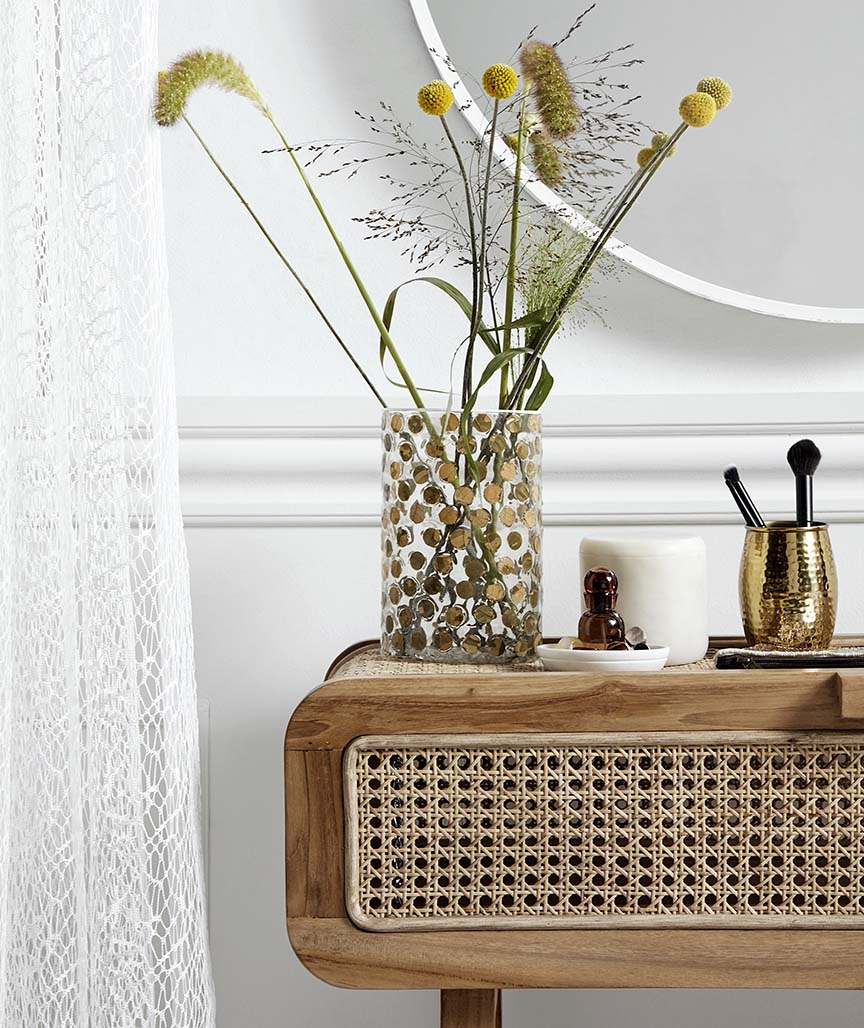
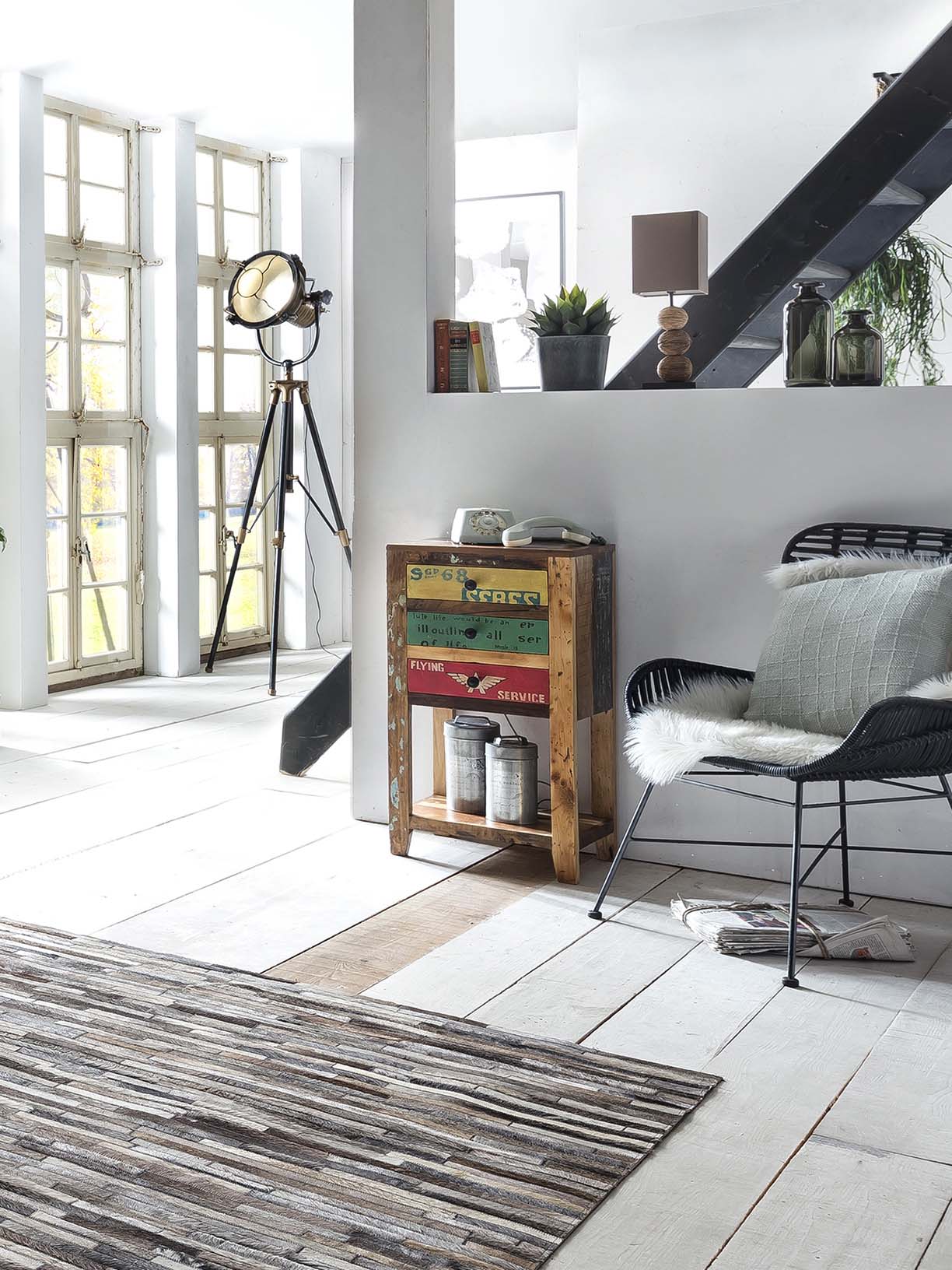
Photo courtesy of The French Bedroom Co
Photo courtesy of Smithers of Stamford
Rattan and Recycled is Retro
This Retro Rattan Console blends craftsmanship and texture with a little bit of artisan vintage into your space. Cane wickerwork and teak framework work perfectly together to reinvent the 70’s furniture trend into a more refined, elegant shape, styled more for modern homes.
Made from solid recycled boat hardwood, the satin hand-painted finish has been added to bring out the beauty of this retro speedway range. It’s retro, unique and a lifetime buy that will never go out of fashion.
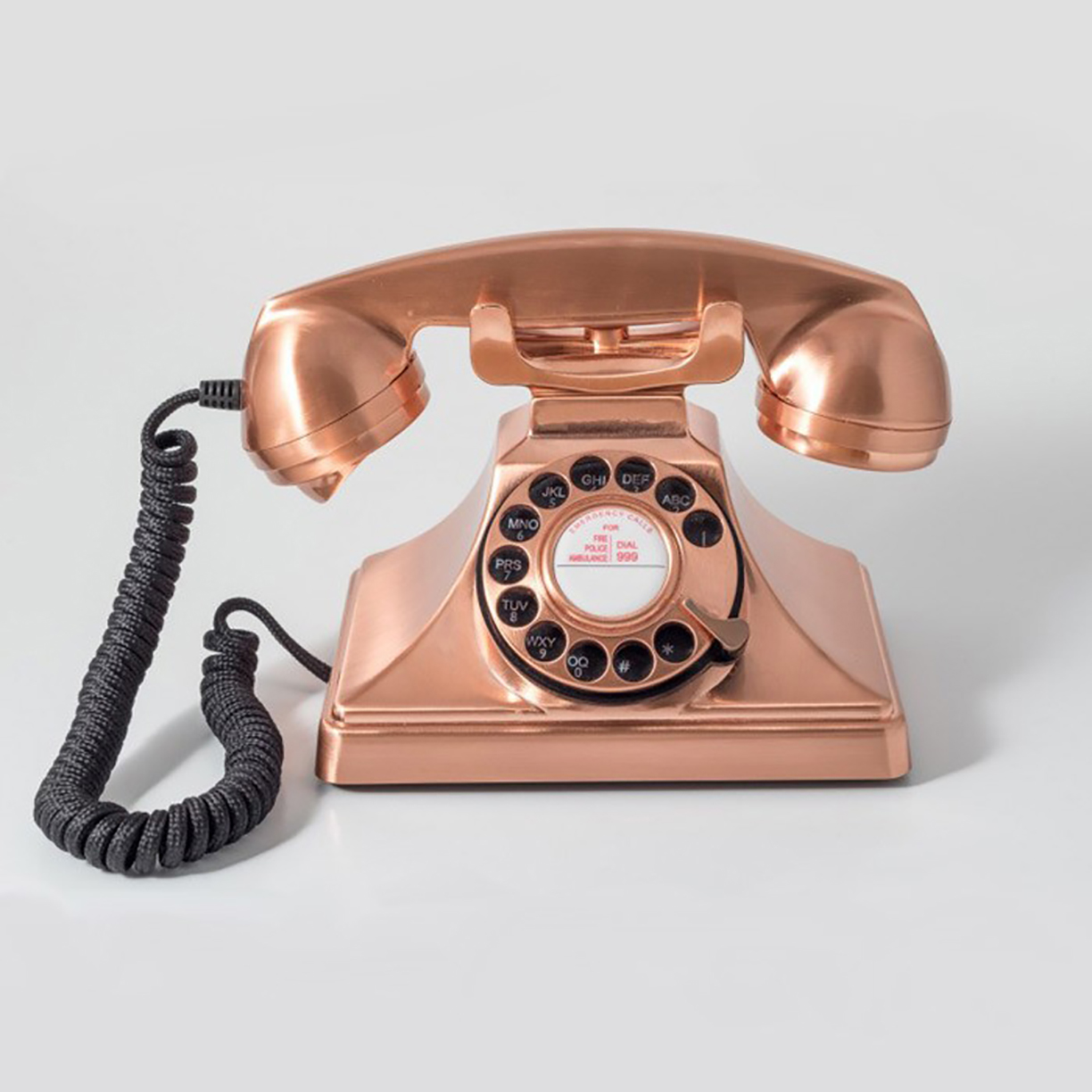
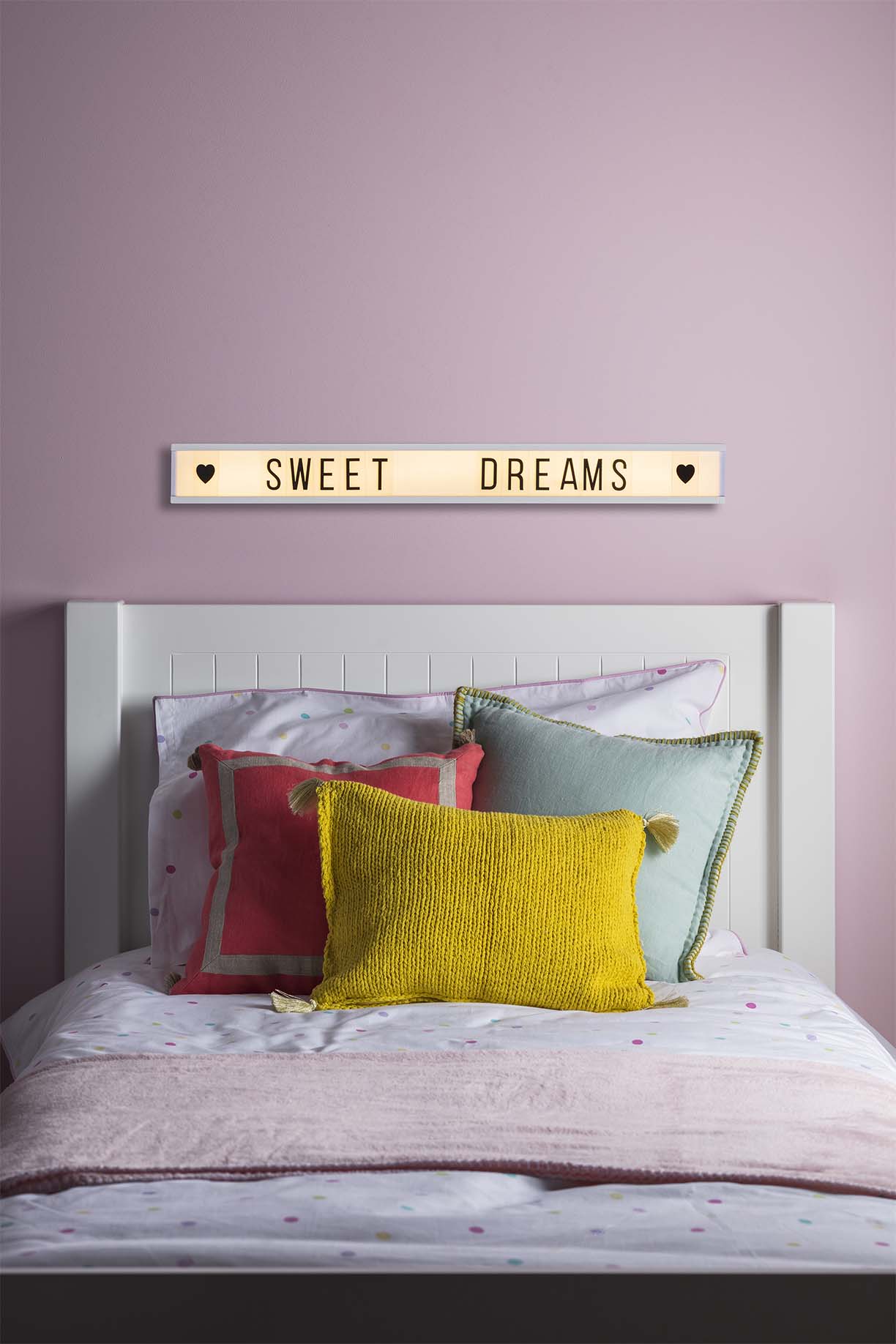
Photo courtesy of Yellow Octopus
Photo courtesy of Lights4fun
Props that aren’t Played Out
The GPO 200 classic, British Rotary Telephone is a one-stop communication portal for all your conversation needs. Touch base with friends and family, then buzz, dial and connect with a classic design of modern technology. Bring a piece of iconic phone technology right back into the present.
Retro Cinema Lightbox is the perfect opportunity to customize your decor. Create a fun message that suits your mood and enjoy the classic element that will elevate your space.
FOR YEARS, NEW TECH COMPANIES HAVE BEEN THOUGHT OF AS THE ‘DISRUPTERS’ IN THE REAL ESTATE INDUSTRY. BUT SAVVY REALTORS ARE POSITIONING THEMSELVES AS THE AGENTS OF CHANGE.
The current market shift from buyers to sellers generates the most attention, but the number of sales and pace of price appreciation are only one swell in the wave of transformation rolling through the real estate industry. Technology is typically hailed as the disrupter, but changing demographics, new lifestyle aspirations and evolving buyer preferences are all at play in today’s real estate landscape.
“If you ask anyone that has been in the business more than 10 years, they say ‘here we go again.’ More paperwork, more platforms, more new companies, more new agents. Yet, ultimately real estate is the same. Our clients require handholding, advice, and moral support, deals get negotiated, and transactions finalize or fall apart. Yes, there are slight shifts in the marketplace, but generally, it still functions the same,” shares Lucio Bernal, a broker associate with Coldwell Banker Residential Brokerage in Palm Springs, who is also an expert trainer with the Institute for Luxury Home Marketing.
What is changing is almost every other aspect of real estate from tools to facilitate broker client relationships to virtual reality apps enabling buyers to envision making a prospective property their own. Increasingly agents are looking to their brokerages to keep pace with technology. “They are leaning on their brokerages, more than ever, to help arm them with tools, from digital marketing to smart, proactive customer relationship management systems (CRMs) that will keep them cutting edge, as well as those they can’t afford to leverage on their own,” says Stephanie Anton, president of Luxury Portfolio International. Additionally, affiliate groups like Luxury Portfolio and major brands have amped up marketing capabilities so agents can easily create a cohesive campaign.
There might be a technology revolution taking place in real estate, but market shifts are reinforcing the importance of the agent. “Technology has always been the present. It’s how you use it that benefits you the most,” shares Bernal. “The perfect example is: If you are dealing with a consumer, they are more likely to use you based on reputation and recognition than whether you know a certain app or technology platform. Technology should be used as a resource and compliment your ability to get face-to-face and maintain contact with a consumer.”
At this time last year, blockchain and the impact of virtual reality and artificial intelligence on real estate were being debated. Today, the chatter is about portals morphing from search engines to places to buy and sell homes, a new classification the industry characterizes as iBuyers. Opendoor, founded in 2013, started the trend, followed by others including Offerpad and Knock. Zillow and Redfin have also introduced iBuying in some markets. iBuyers purchase consumer’s homes outright using analytics that enable them to come up with a price based on the home’s perceived value, usually within days. Unlike homes sought by flippers, these are not troubled properties and offers reportedly are close to the value estimation. Other portals are beefing up offerings for consumers, adding mortgage and title services. Startups such as Purple Bricks offer a new twist on the flat-fee concept.
Investor dollars from venture capital and hedge funds are flowing into real estate, fueling many new ventures, which is another change potentially revamping the industry. “Everyone is investing in technology to disrupt or change real estate,” says Mark Choey, co-founder of Climb Real Estate, a San Francisco brokerage, which was acquired by Realogy’s subsidiary NRT in 2016. The real estate industry is rapidly shifting, and innovation is not just welcome, it’s desperately needed,” said founder Chris Lim, whose background is in marketing. Choey hails from the tech sector. Climb was the first brokerage to work with Matterport and continues to incubate emerging apps and work with new vendors.
ENABLING THE AGENT
Among traditional brokers, Keller Williams and RE/MAX are often noted for new tech initiatives, but almost every brand and national affiliate group is boosting technology offerings and platforms, often through relationships with providers and new tech venders including virtual staging, enhanced CRM and 3D tours and imaging. Technology ultimately benefits consumers, but traditional brands and affiliates say their focus is enabling their agents to do a better job.
“Everything has shifted in many different areas from the brokerage level, the buyer level, who the buyers are, what they are looking for,” says Sally Forster Jones, executive director, Luxury Estates, Compass. “I think there is a shift in the way that brokers are functioning. They are more innovative with more technology and more marketing as opposed to the older traditional real estate firms.
“Consumers care about responsiveness. They care about the fact that if they reach out to an agent, whether it be on their website or mobile app the agents gets back to them instantly, and technology can help with that,” says Marilyn Wilson, founding partner of real estate consultants WAV Group and also a founder of RETechnology.com.
“Technology has always been the present. It’s how you use it that benefits you the most. The perfect example is: If you are dealing with a consumer, they are more likely to use you based on reputation and recognition than whether you know a certain app or technology platform. Technology should be used as a resource and compliment your ability to get face-to-face and maintain contact with a consumer.”
Tapped by Google to create a virtual staging app using augmented reality, Sotheby’s added Curate to agent toolboxes last year. Not only can a homeowner visualize a home before buying, but a partnership with a home furnishings company allows potential buyers to virtually furnish the home as well.
“A depth of understanding of what a property has is really important to consumers. The other thing that consumers are responding to online are floorplans,” says Wilson.

GETTING REAL WITH VIRTUAL
In the last year, GeoVC, a tech start-up offering 3D immersive tours and floorplans that can be created using next generation smartphones, integrated virtual staging, exterior 3D scans, and aerial 360-degree panoramas captured with a drone with interior 3D tours. “Outdoor imagery is captured using a regular drone, automatically processed into a 3D model, and integrated together with interior virtual tour. Such an exclusive experience will differentiate luxury properties with beautiful facades and roofs, and spacious lots,” shares Anton Yakubenko, co-founder and CEO of GeoCV.
“Luxury has really turned into personalization now,” comments Thompson. Tools like Curate, RoOomy and virtual staging apps enhance opportunities for personalization. Thompson explains: “Someone can walk into a home and say, ‘not my style,’ but it doesn’t matter because I have the tools that allow me to make it feel like what I want it to be.”
Even Compass, which touts itself as “The first modern real estate platform, paring the
industry’s top talent with technology,” says technology is there to benefit the agent. “Compass is building for the agent. Every program, tool, and service is (created) with the agent in mind. Many of the other real estate technology companies out there are working to improve the consumer experience and not focusing on the agent. We believe that by empowering the agent, consumer experience will be improved,” says Sarah Vallarino, head of West Region Communications at Compass.
“Talking to agents, the message we consistently heard was ‘give us technology,’” says Thompson. “They didn’t necessarily know what that technology was just that they needed it. They understood that the industry was changing, and consumer behavior was changing. They know because they’re the boots on the ground and so they can feel the shift in consumer behavior.”
As markets shift, agents are retooling, once again looking at how they do business and what skills and knowledge will be required. “It’s always either somewhat of a buyer’s market. It’s somewhat of a seller’s market. You just have to have your tools in your tool shed and the mindset to be nimble enough to adjust as you read the tealeaves, ” is Wilson’s suggestion.
“Luxury has really turned into personalization now,” comments Thompson. Tools like Curate, Ro0my and virtual staging apps enhance opportunities for personalization. Thompson explains: “Someone can walk into a home and say ‘not my style,’ but it doesn’t matter to me because I have the tools that allow me to make it feel like what I want it to be.”

AGENT PIVOTS
“Many long-time successful agents are being the clever, resourceful entrepreneurs that they are and changing with the market as the market shifts,” says Anton. “Agents today talk about how much of their time and value derives from being an educator for their clients. They partner with their clients to keep them armed with as much information, insights and insider activity as they can, so when it comes time, for example, for an agent to recommend a price reduction, the client is completely aware of the statistics, days on market, what is moving and what isn’t. Nobody wants to have an overpriced home that is sitting and not selling even in a hot market.”
“Today, clients will attempt to collect their information on their own, perhaps from incorrect sources, so agents report pivoting, now more than ever, to spend a lot of their time educating their clients,” she says.
Regarding slowing sales or price appreciation, Anton says: “I highly recommend agents tell the truth, focus on educating their following/clients, and in the process, let their own voice be heard and be themselves. If the market is cooling, share the stats and manage expectations. It’s not the time to be overly positive and cheery as you will come off inauthentic and salesy. Focus on the facts, insights and provide professional guidance.”
“Agents have to stay on top of what is available to them and the consumer. It is imperative to be able to explain the data, to have polished negotiation skills, and to know when to assist the consumer in processing that information,” says Bernal.
“Agents should take full advantage of all the resources that the brands they work with provide. The majority of agents won’t, and that has never changed. Those that want an edge in the industry recognize that there is value in resources and take advantage of some of them. For most agents, resources are overwhelming, and therefore don’t take the time to learn and use them,” says Bernal.
Thompson recalls, “We had to dig in and find out what exactly is it that they (agents) need that will make a difference for them in their day-to-day because they think, you know, there are lots of real estate brands that tout themselves as technology companies, but they really don’t have anything really different.”
“Everything has shifted in many different areas from the brokerage level, the buyer level, who the buyers are, what they are looking for. I think there is a shift in the way that brokers are functioning. They are more innovative with more technology and more marketing as opposed to the older traditional real estate firms.”

EYE ON THE FUTURE
Mark Choey from Climb says, “I think you’re going to see a lot of change in the next year or two,” most likely from many directions. Choey is head of Climb’s Innovation Lab. Having an innovation lab, particularly for a small company, is in itself an innovation. “You’re going to have some business models that are going to evolve, like Opendoor and Knock, that are really going to change the way people buy and sell homes, but it’s not gonna change everything, right. You’re going to have Redfin, Zillow and others come out with tools and things that are going to attempt to either reduce the commission or to simplify to transaction. On the other hand,” he says, “you’re going to see traditional real estate firms arming themselves with technology.”
And while some tout themselves as technology companies, Thompson doesn’t see traditional and technology as being mutually exclusive terms. “You don’t have to be one or the other. People think of Sotheby’s as a heritage brand because we’re been around for close to 300 years now. But a heritage brand can also be tech savvy. It doesn’t have to be one or the other.”
Looking ahead, Bernal says, “The real estate industry has to take both a broad look and a hyper-local look at where the marketplace is based on data and individual perspectives. We say that real estate is local, yet there are many determining factors that create a web of interconnected behaviors throughout the world of real estate.”
Consider Los Angeles, Manhattan and Miami, where the impact of fewer international buyers extends beyond sales and prices. Post-recession, international buyers became a market force determining what was being developed, locations and price points. On the West Coast, view properties and contemporary architecture were particularly favored by Asian buyers, and new builds were often geared to these buyers. Now many L.A. buyers, particularly in higher price points, are local or hail from the U.S. and have different expectations of luxury with walkable locations and neighborhoods taking precedence over views. “That’s a shift and it will continue to be a shift because we have a lot of properties coming on the market geared toward that international buyer,” says Jones.
The desire for the ability to walk to shops and restaurants is happening across all price points, according to Jones, and these new preferences are not limited to L.A. Walkability has been associated with urban settings, but increasingly this characteristic is being applied to suburbs, towns and master-planned communities.
Traffic and gridlock also add to new preferences for locations. In the not too distant future, traffic itself may be seen as even more of a disruptor than it is now, changing where people live and property types.
Photo of Lucio Bernal by Cherie Johnson for Moncherie Fotography. Photo of Sally Forster Jones by Lauren Hurt. Photo of Kevin Thompson courtesy of Sotheby’s International Realty.
The attendee of a modern upscale event expects more than a standard plate of meat, potatoes and vegetables. This year’s catering trends address the demand for a more exciting, sustainable and updated take on the culinary soundtrack to an elegant event. With an ever-growing selection of vegan fare, an emphasis on locally sourced ingredients and the visual appeal of station-based catering, partygoers have more choices than ever when it comes to fine dining.
Whether it be for health or other reasons, many have recently chosen to restrict their diets to avoid animal products. Caterers have not missed a beat in having options for the growing vegan population, and have also created custom menus for diners with other dietary restrictions. While an all-vegan menu may be perceived as a hurdle for a host concerned about the satisfaction of non-vegan guests, hearty vegetable-centered entrees like roasted eggplant have become popular solutions that please all guests.

Guests have an array of vibrant vegan options to choose from.

Veganism is not the only movement to emerge from growing concerns about healthy and sustainable food; providing locally sourced foods is critical to the environmentally friendly host. In 2019, caterers showcase their local sources of produce, meat and dairy products to appeal to guests striving to limit their consumption of food that requires ecologically costly transportation to arrive on their plate.
While it has long been known that we eat with our eyes, trendy showstopping presentations are relatively new to the catering scene. Engaging and interactive stations with visually appealing options are beginning to bridge the gap between food and entertainment at events.

Left: Flame-seared steak is prepared live in front of guests. Right: Molecular cocktails add an innovative twist to catered beverages.
The Chicago-based company Catering By Michaels presents custom stations where foods like ramen or flame-grilled steak are prepared in front of the consumer. These awe-inspiring showcases of elegant cooking elevate the experience for guests at high-end gatherings. Catering By Michaels has found that stations are the perfect way to wow a crowd looking for a diverse array of options, each with its own charming twist.
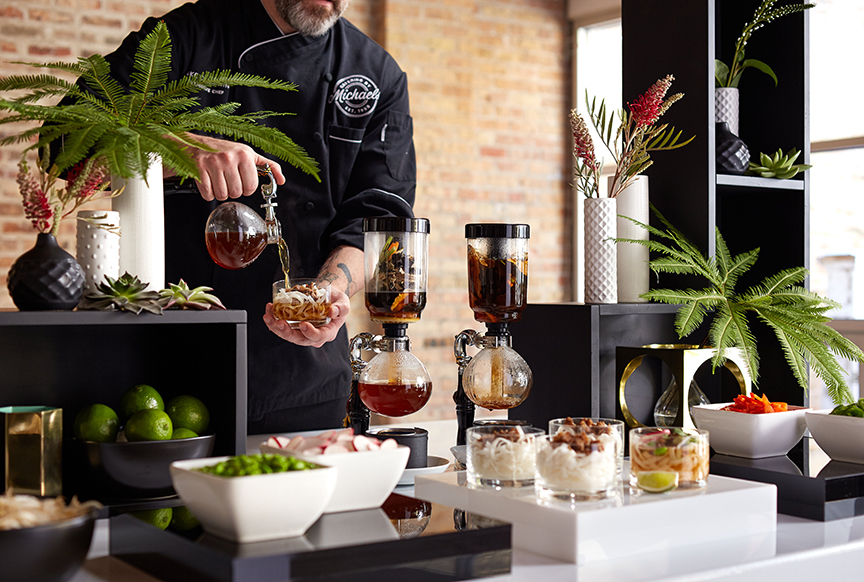
Catering By Michaels’ unique Ramen Station.
Photos courtesy of Catering By Michaels.
As spring fast approaches, it’s time to rid your home of those dark winter tones — such as browns, blacks and grays — and time to bring in a few bright accents.
From neon yellows to pale pinks, here are a few colors you can use to brighten your home in time for spring.
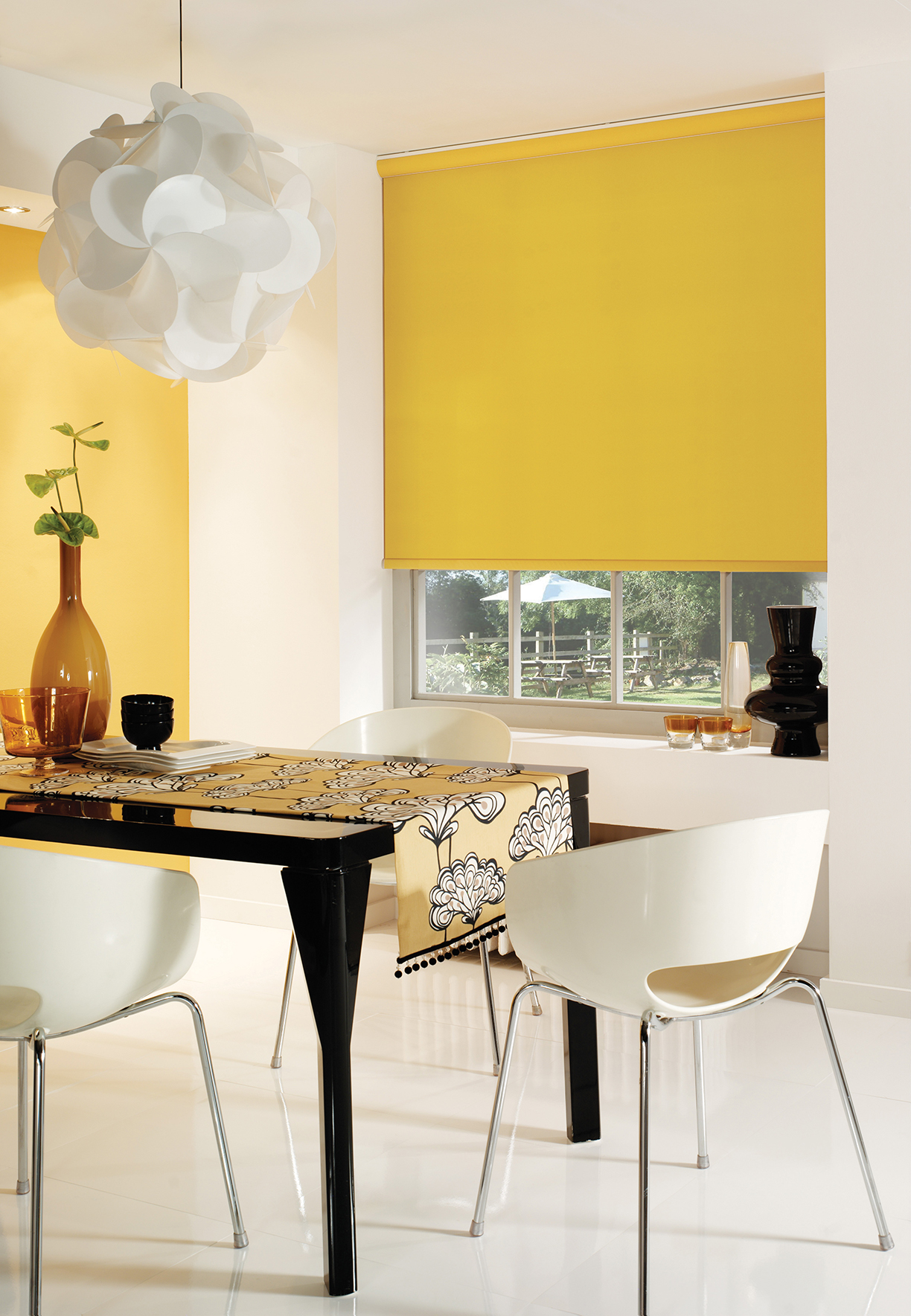
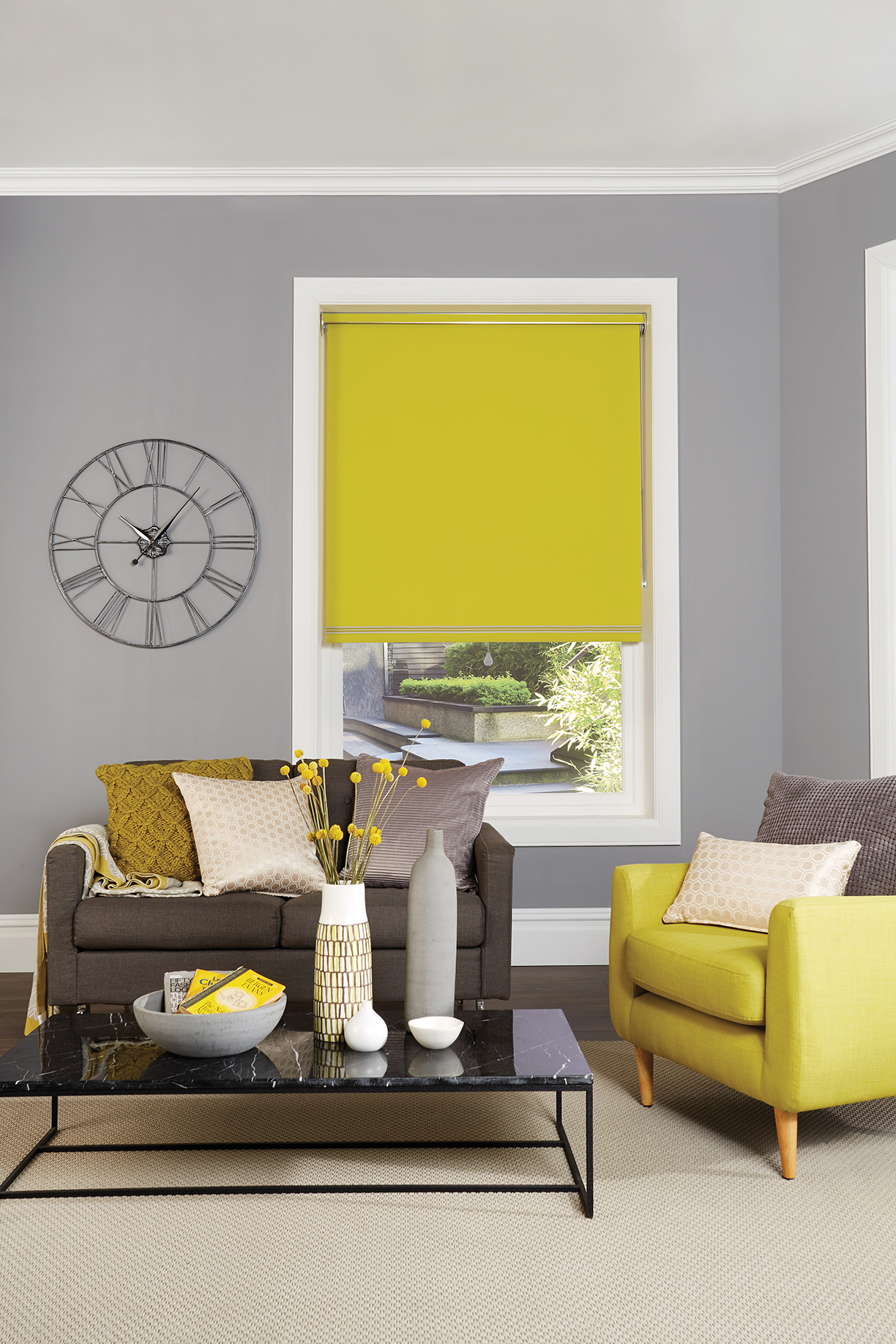
Yellow
Whether it’s the image of sprouting daffodils, the sandy beach or the shining sun, yellow is surely a color that reminds us all of springtime. From carpets and cushions to sofas and tables, these pieces will help you to embrace a pop of yellow just in time for spring.
Photos courtesy of English Blinds
Blue
From bedrooms to living areas, both light and dark shades of blues create a calming atmosphere reminiscent of laying on the beach.
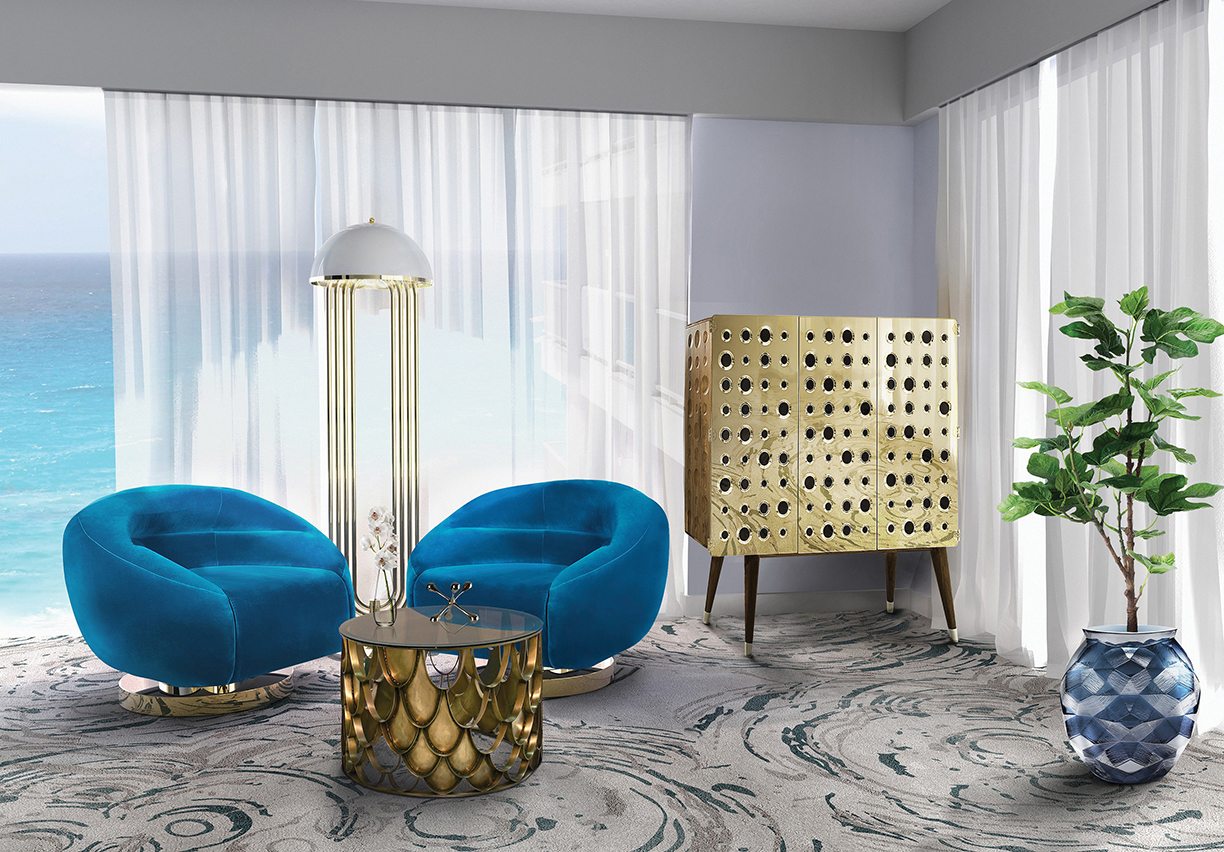
Photo courtesy of Covet House

Photo courtesy of Brabbu Design Forces
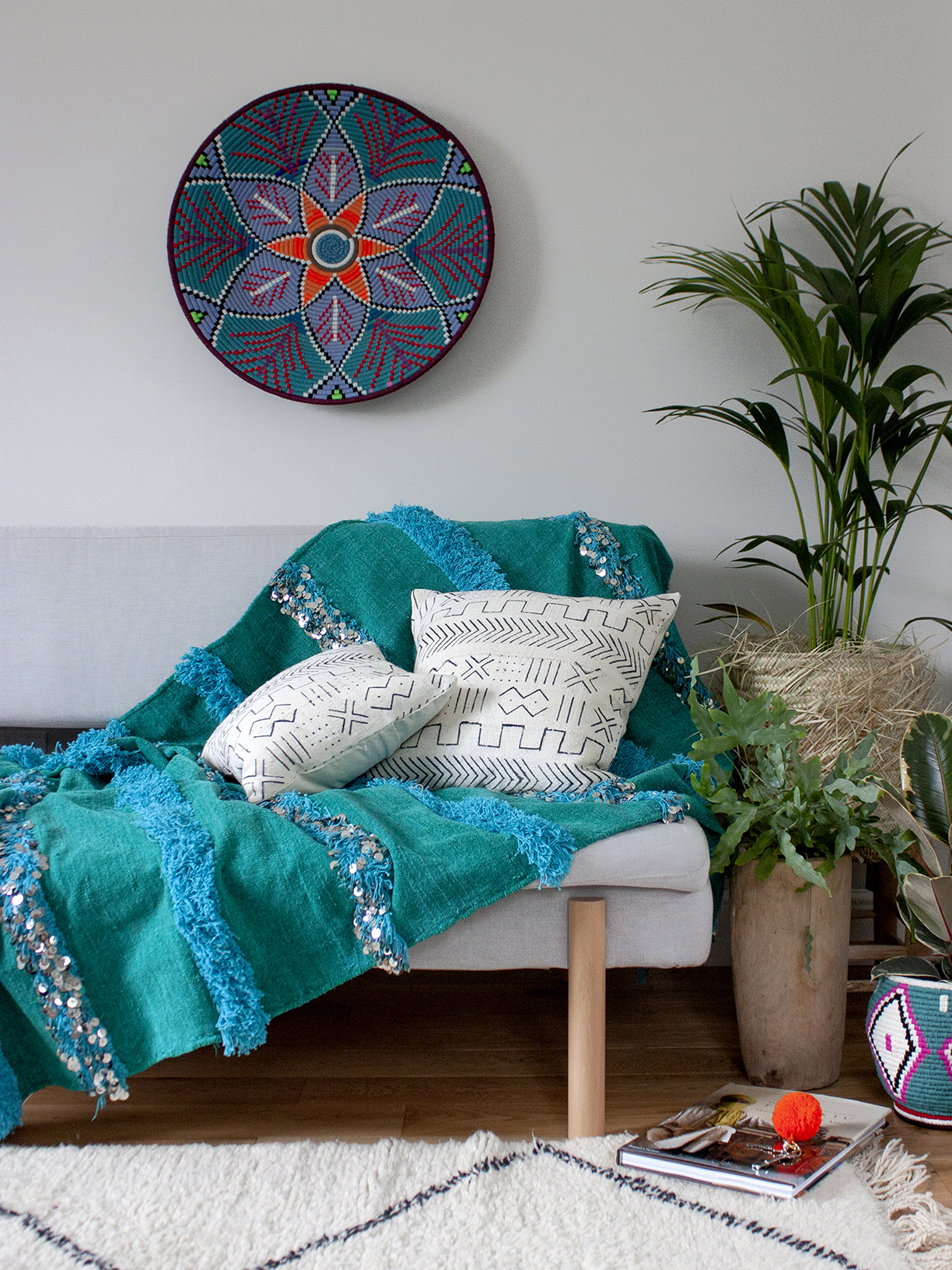
Woven by artisan weavers in Marrakech, this luxe bohemian home accessory is extremely versatile — use it as a blanket, decorative throw or statement wall hanging.
Teal
Teal, a color that has maintained popularity since 2017, pairs nicely with metallics, especially coppers and golds, or leafy prints. From kitchens to cushions, this bright and cheerful color can be used is almost any space.
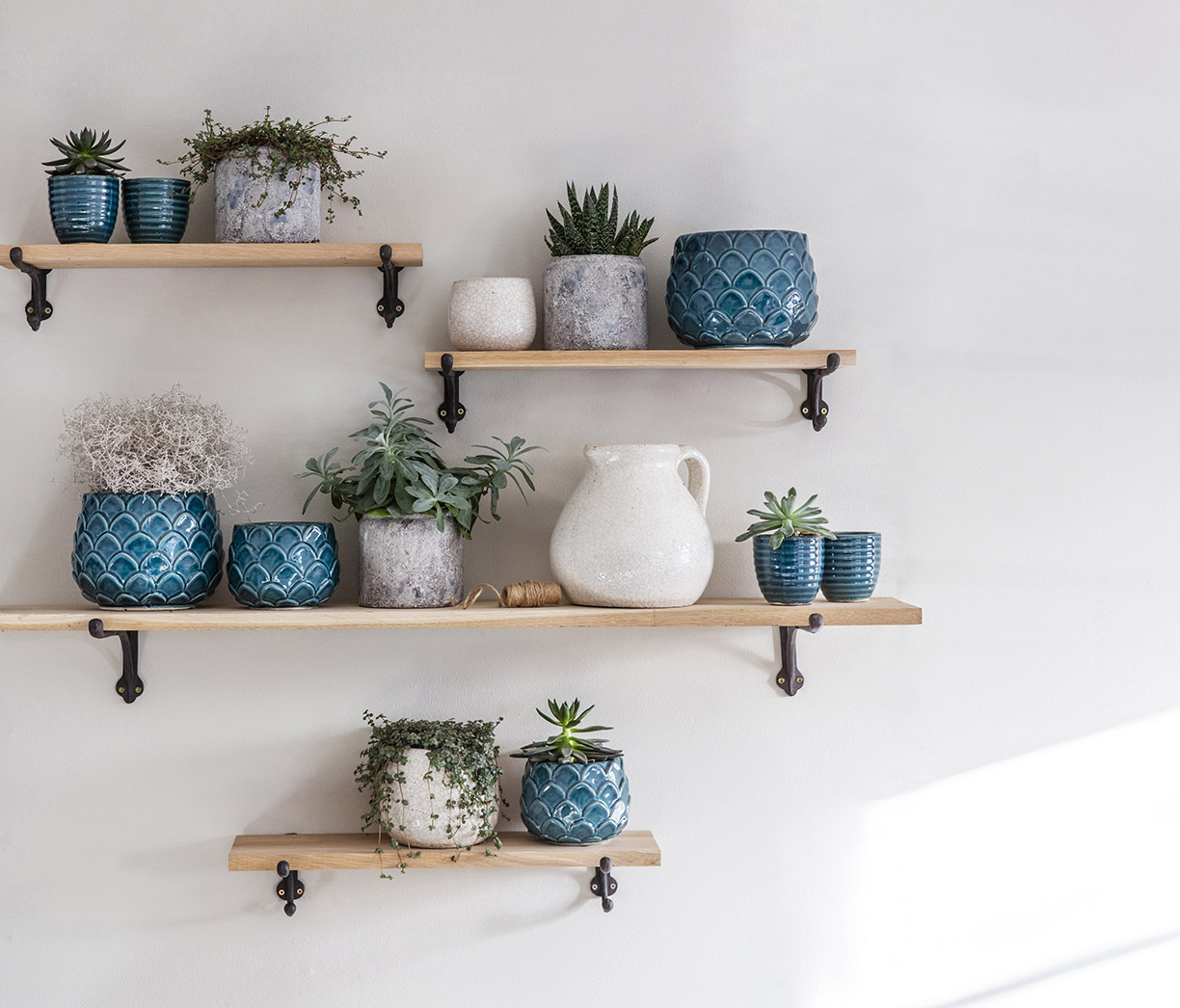

Left: Photo courtesy of Bohemia Design Limited
Middle: Photo courtesy of Garden Trading
Right: Photo courtesy of AUDENZA
Pink
Spring is the perfect season to bring pink accents into your home, whether with wall decor, a new throw pillow or a vase of flowers.
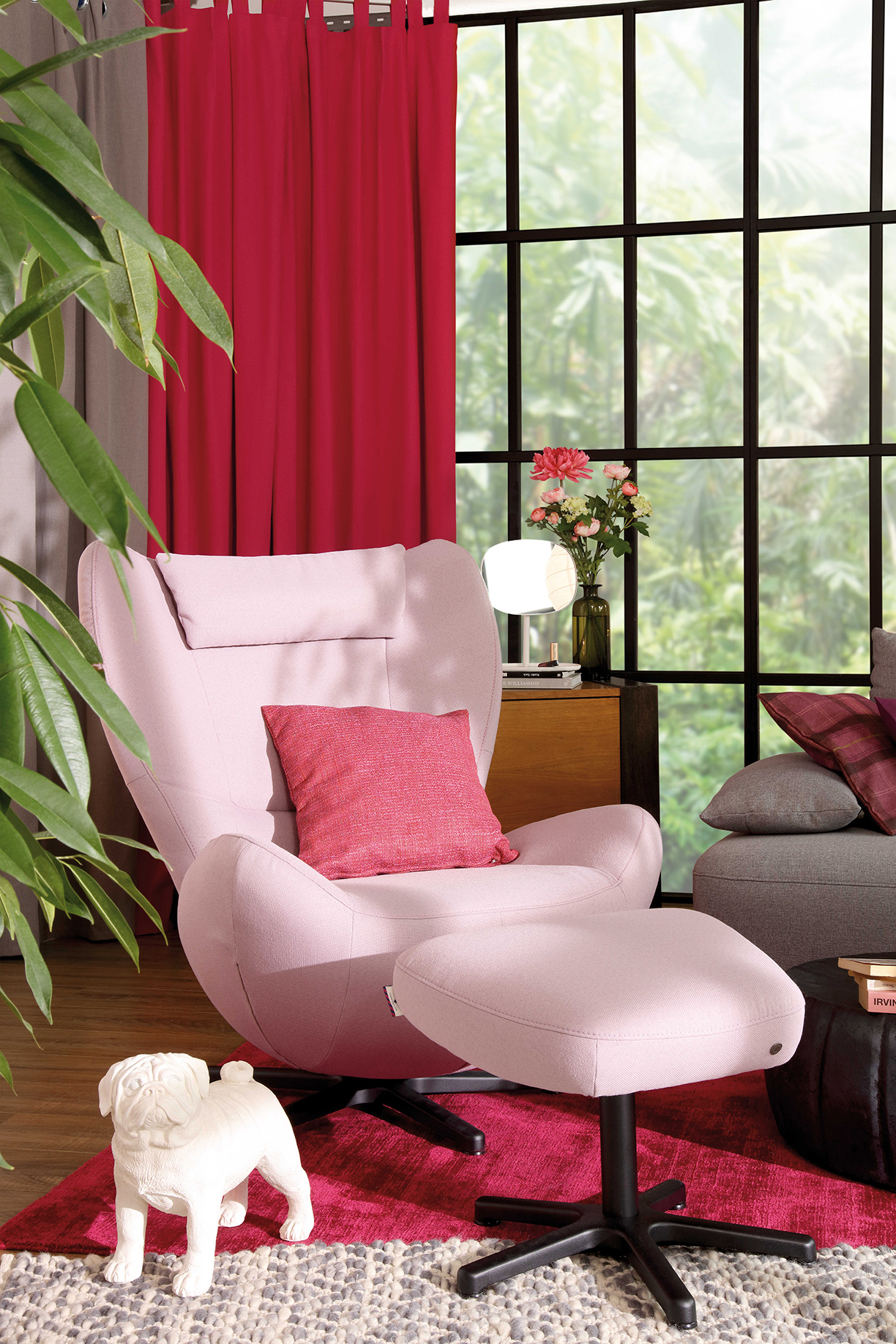

Enjoy Hollywood glamour at its best with this Marilyn velvet armchair in a soft pink cotton velvet. The curvaceous shape of this blush pink armchair offers a touch of chic to your space.
Left: Photo courtesy of TOM TAILOR | Above: Photo courtesy of AUDENZA
Green
The bright yet soothing shades of greens, which resemble the spring’s natural outdoors, can help to bring life into any space.
Right photo courtesy of
Sweetpea & Willow
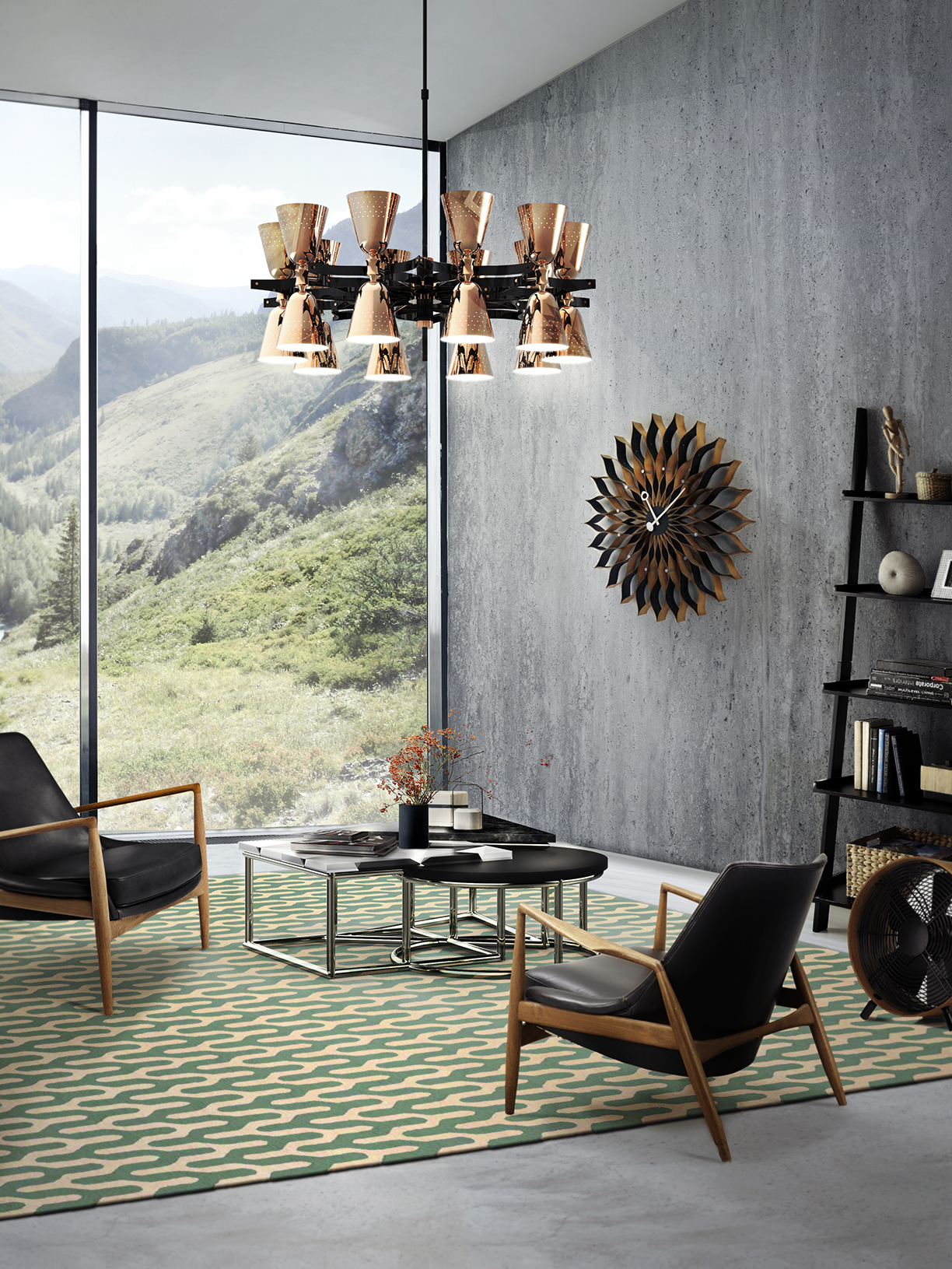
Photo courtesy of DelightFULL
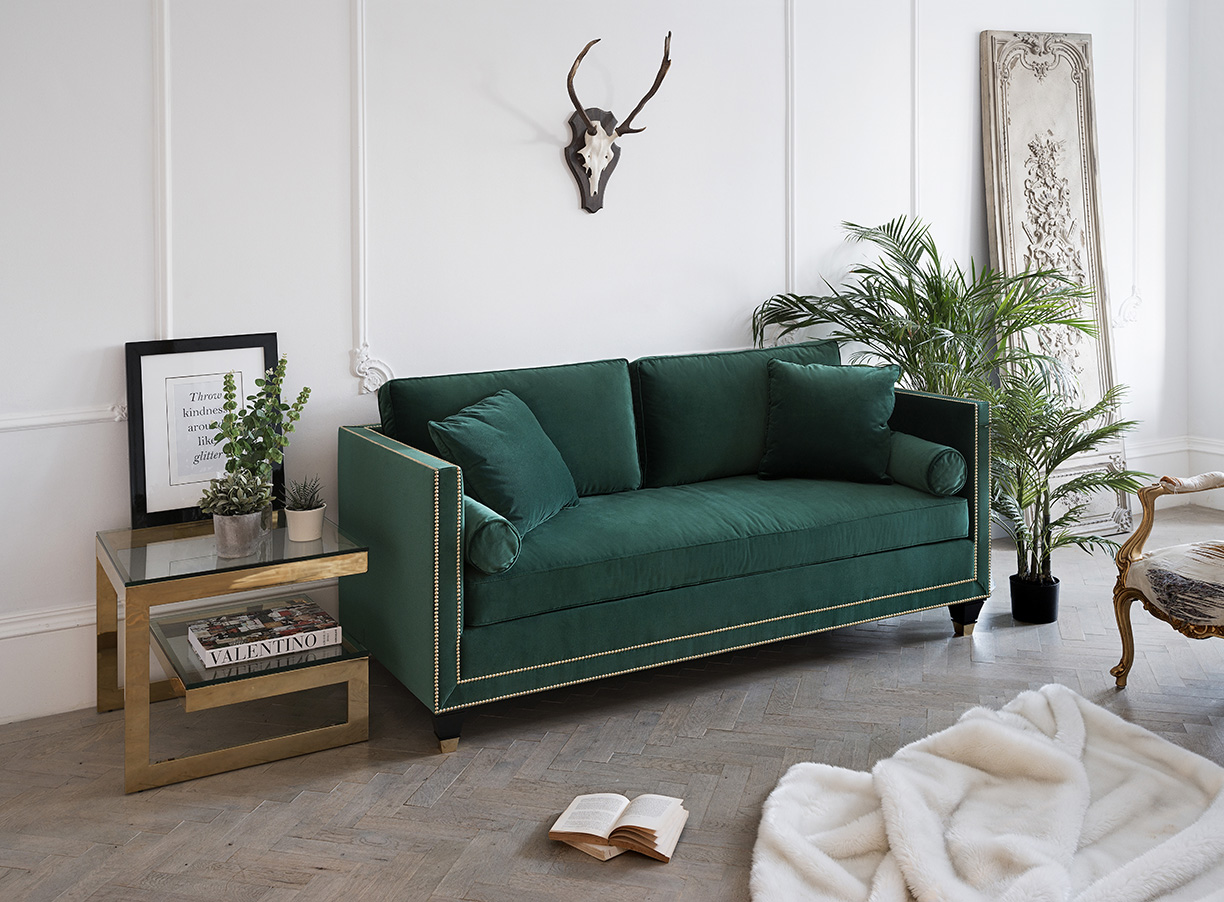
Dark tones are in. Whether in the form of jewel-toned pieces or jet black items, opting for darker tones can add a sense of decadence to your interior.
This trend sees an abundance emeralds, burgundies and blacks being incorporated into homes, often by use of dark furniture, accessories, and wall paint. This sophisticated yet comforting interior trend is perfect for the cozy winter months. But it’s also set to continue as a trend as we go into spring and summer, adding an element of sumptuous to the brighter half of the year. Here are few ways to incorporate dark tones throughout your home this spring.
COFFEE TABLE
Lautner is a coffee table that stands out for its curved edges, mixing earth-tone colors from the varnished walnut wood and polished brass. Its artisan quality and crafted work provides a striking centerpiece for your living room. It has a moody smoked glass on the top and a shelf at the base that offers additional storage.
Credit of Essential Home
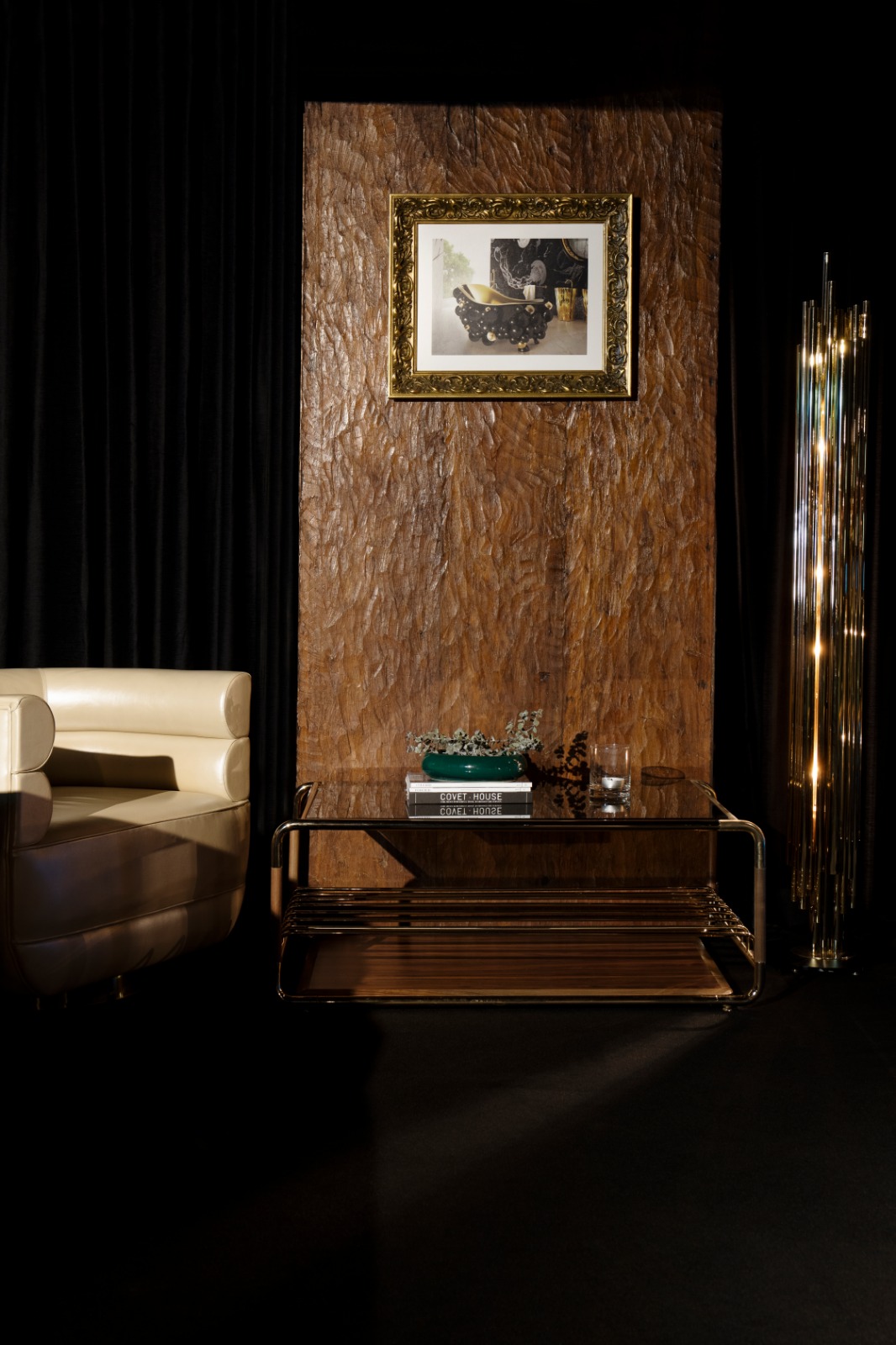
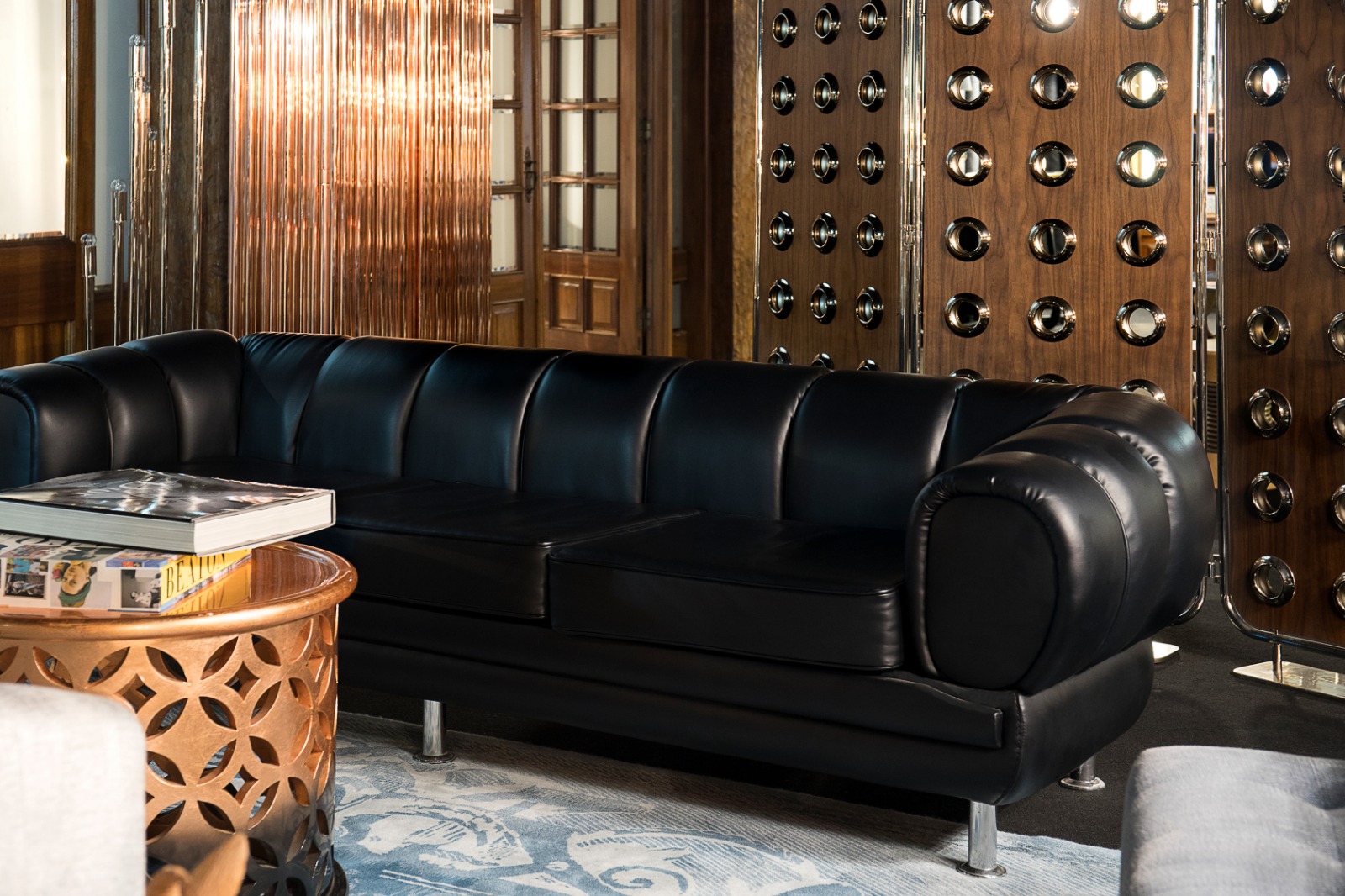
SOFA
Novak is a sofa that combines some details from Mid-Century style with a Contemporary design vision. The base is rectangular, but it has a contrasting low back with rounded shapes, upholstered with a sophisticated leather and finished with piping detail.
Credit of Essential Home
TILE
This beautiful range of glazed brick tiles by Original Style are unique in many ways. The shades are inspired by the English countryside, from the blues of the sea to the earthy greens and warm browns of the English landscapes. Credit of Original Style
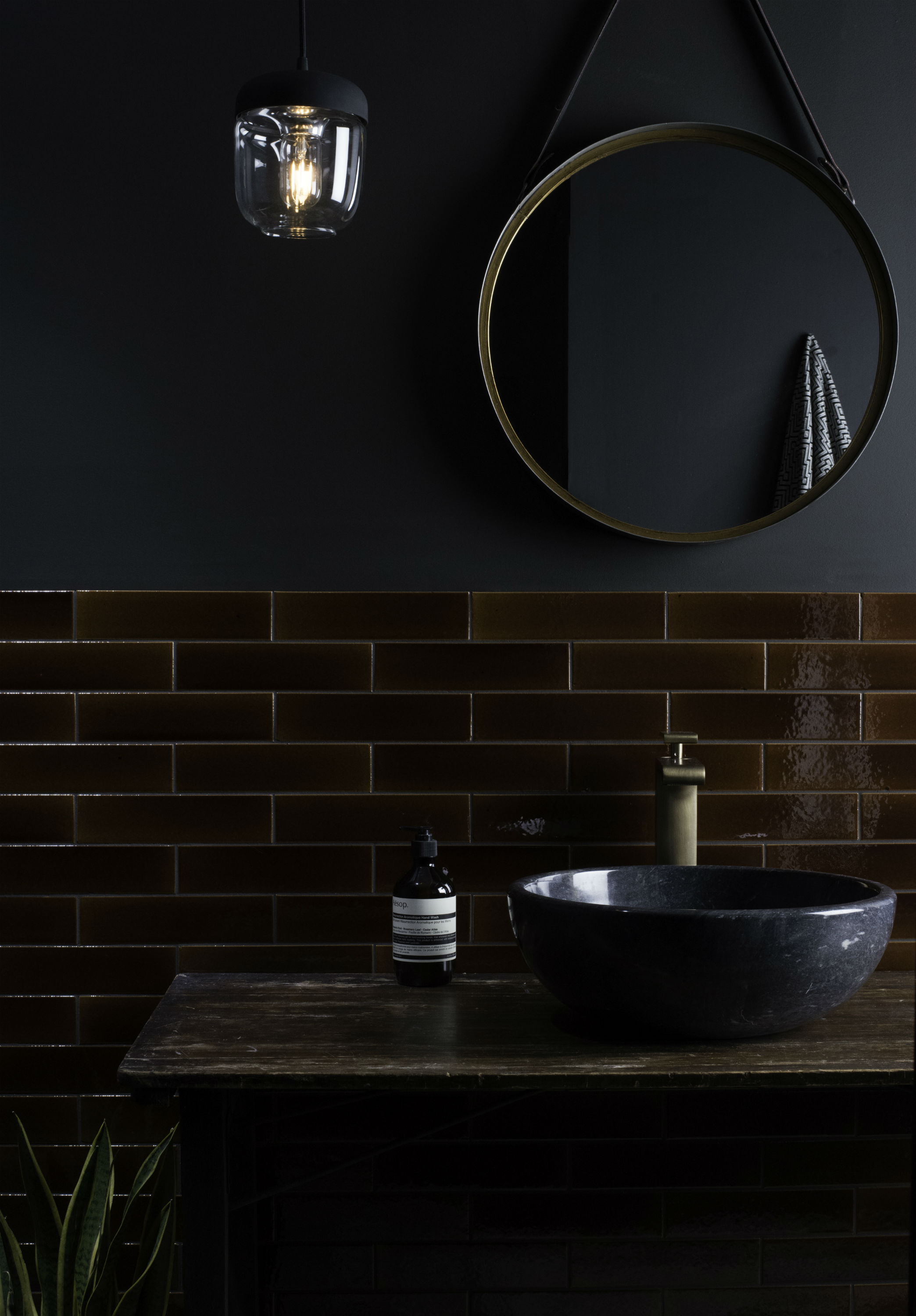

SIDEBOARD
The elegant Darian sideboard stands out in any interior. A rich combination of the best materials and irregular shapes blended together with the precise knowledge of the craftsman techniques grant this radiant sideboard, that also offers plenty of storage, timeless aesthetics.
Credit of LUXXU Home
LIGHTING
The Noctis Urchin Cluster Light is comprised of three ebonised Noctis Urchin Pendants. With an elegant, customisable design that invites personalization, each pendant can be suspended at a different height allowing a showstopping configuration to take charge of your space. Credit of Tom Raffield
